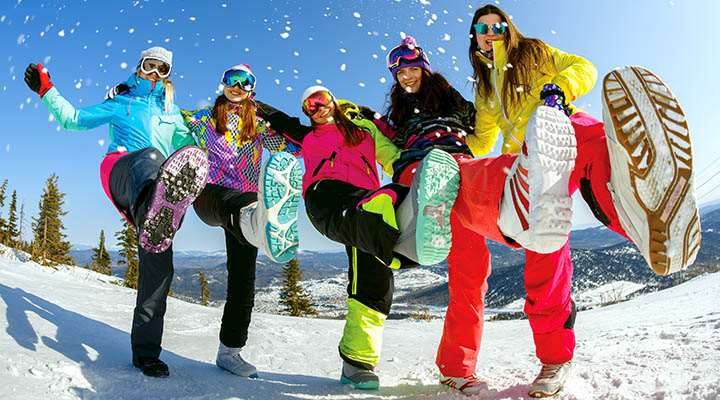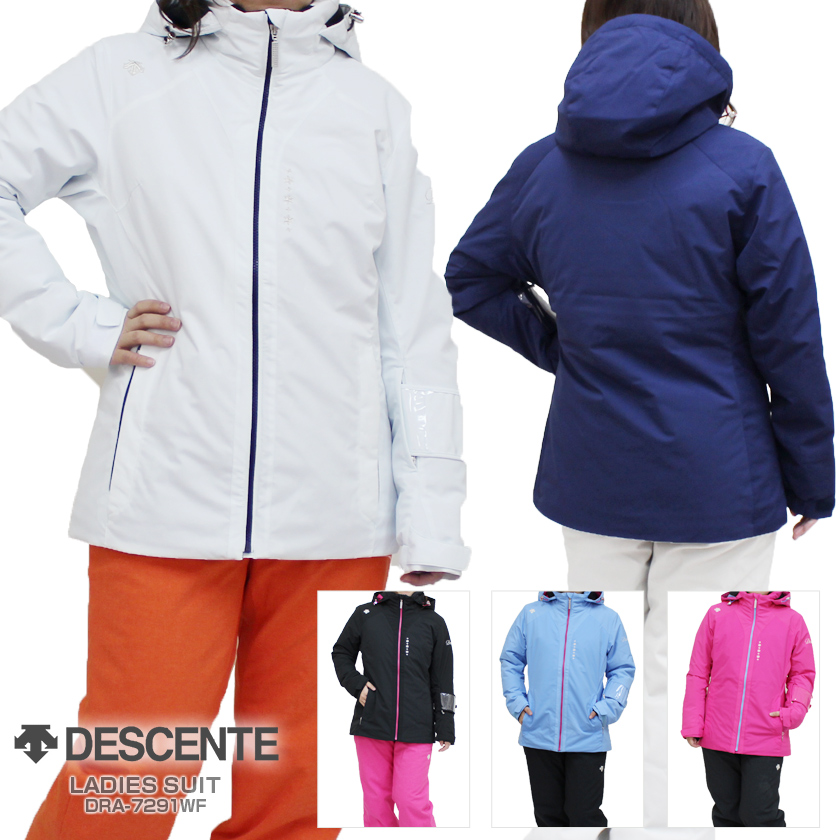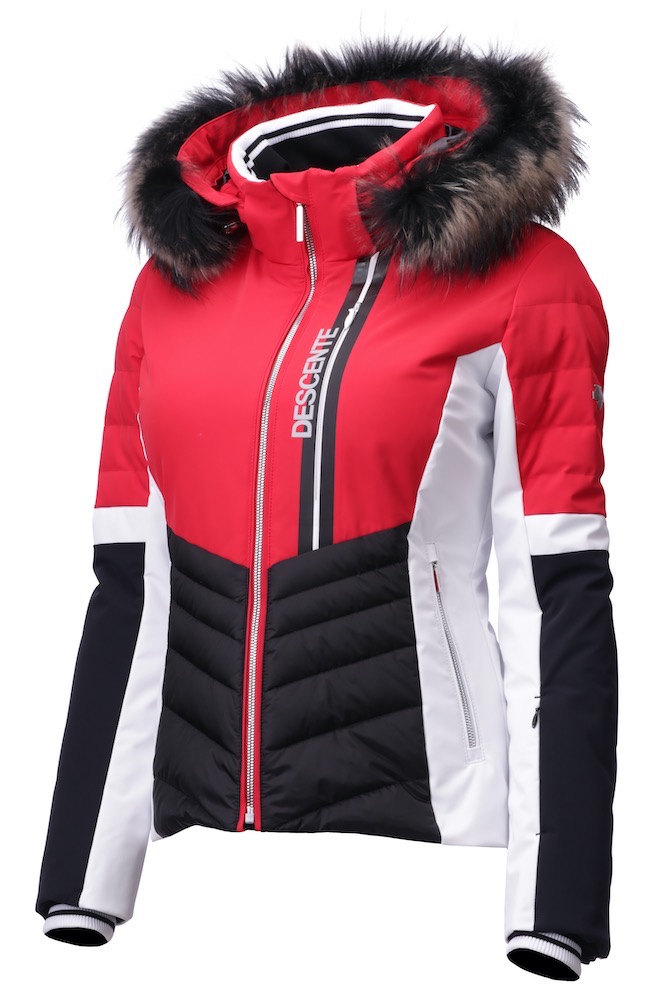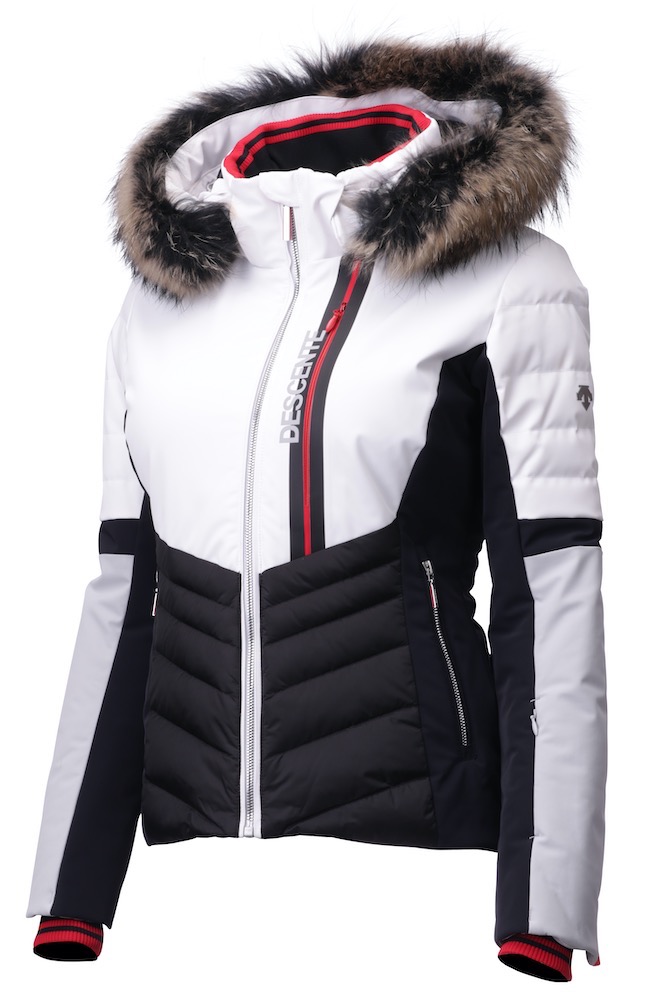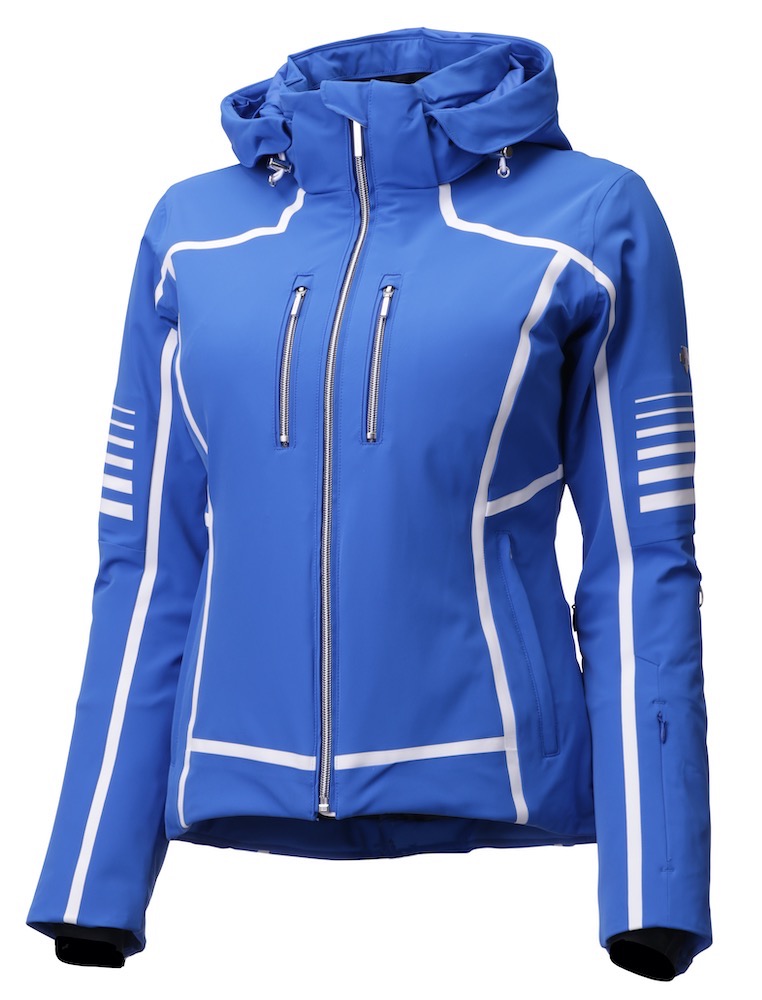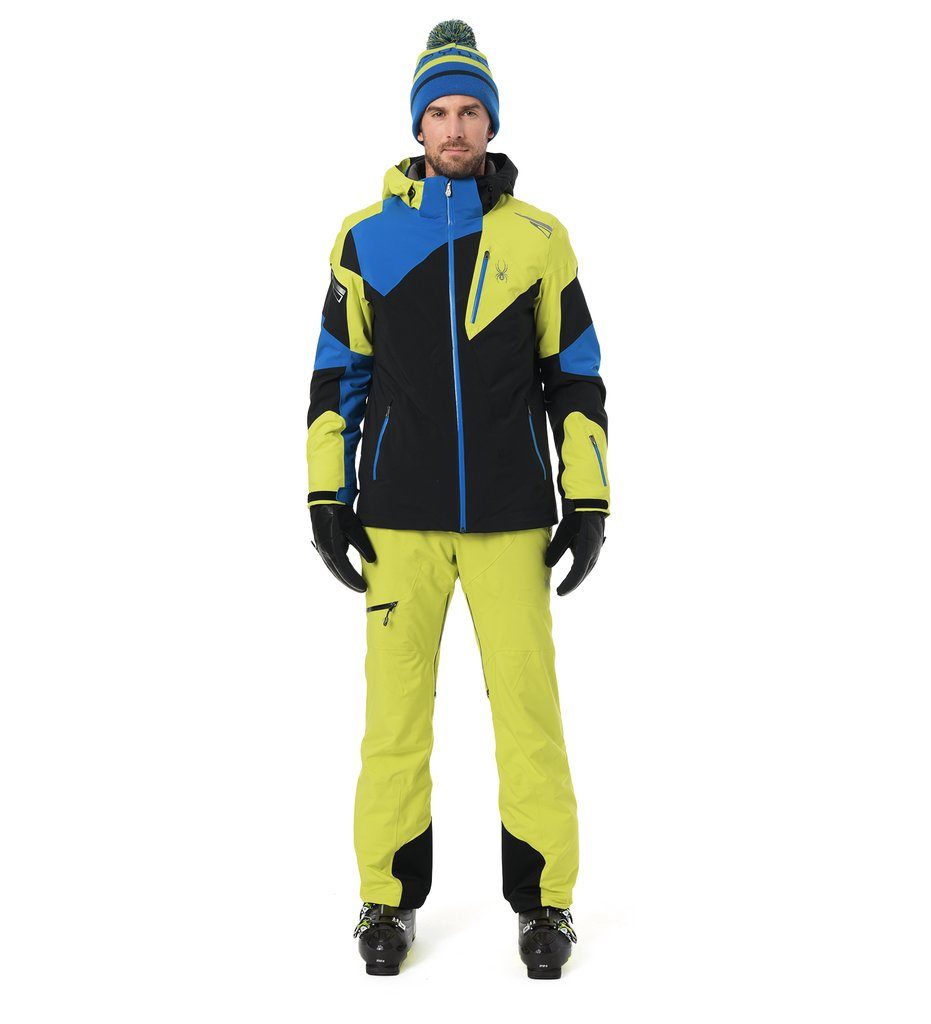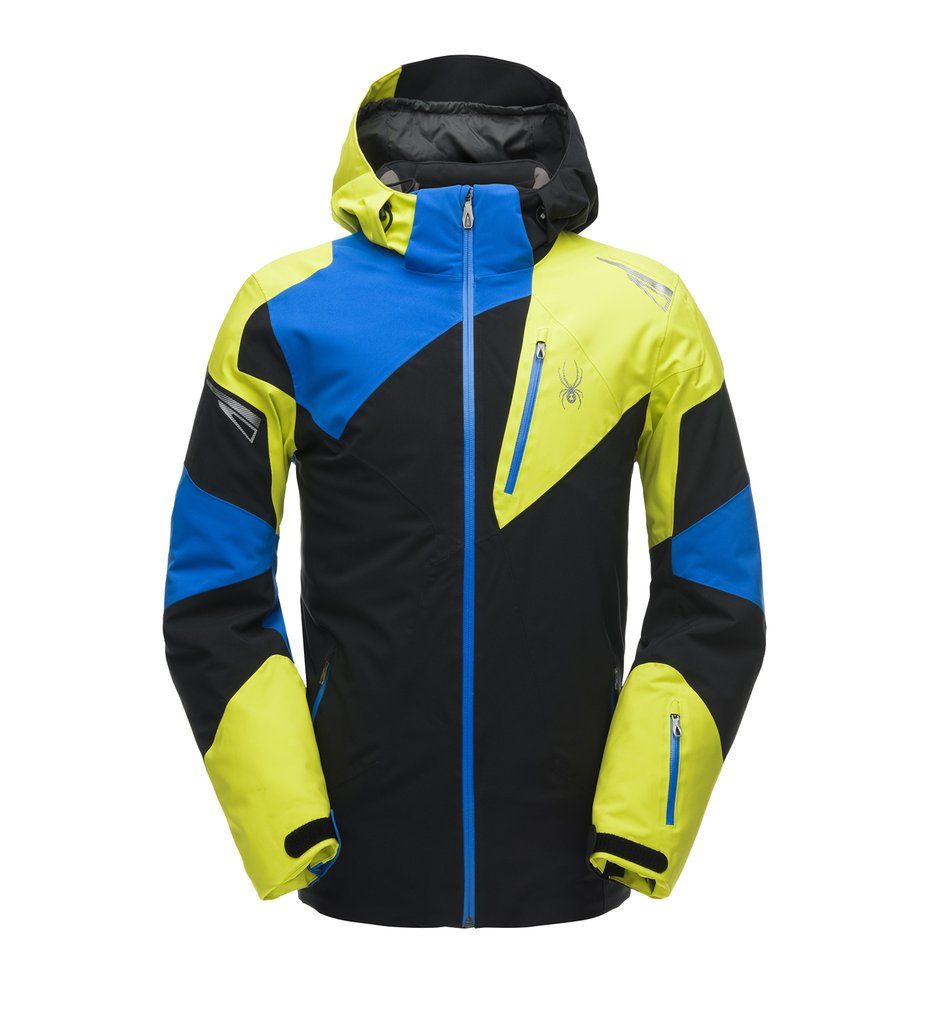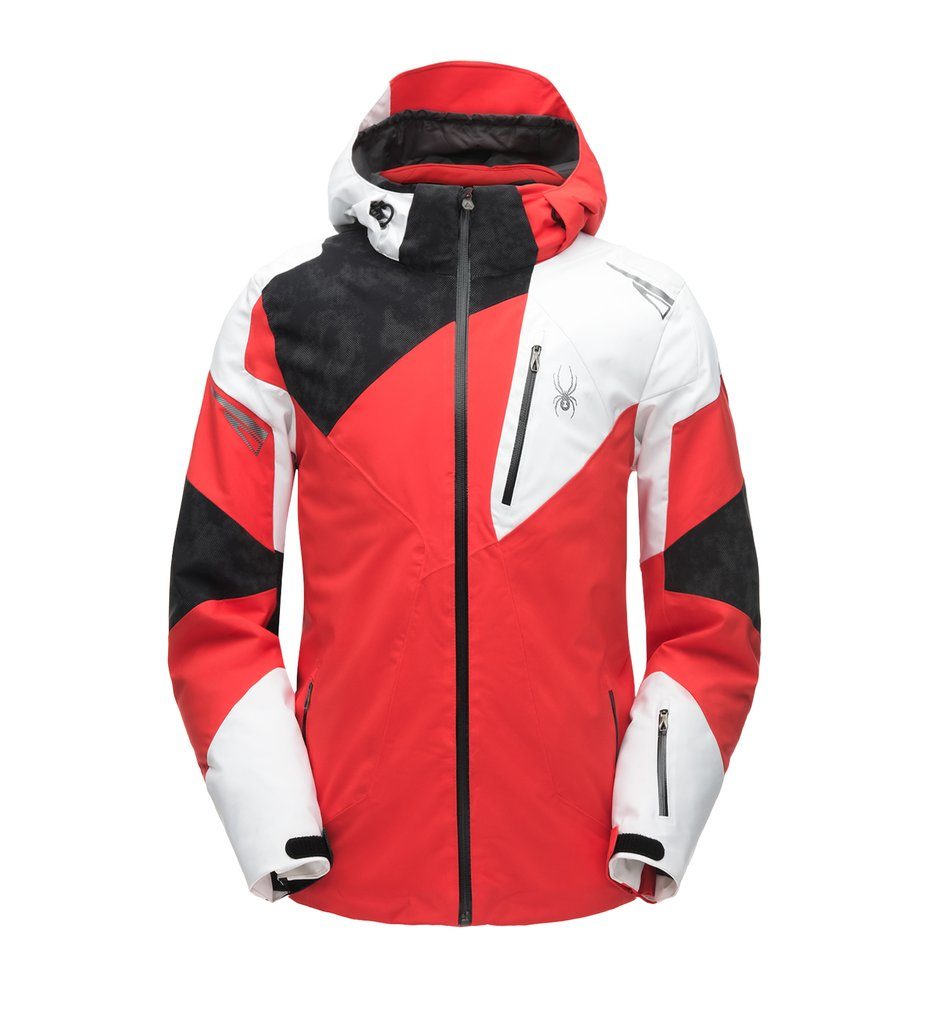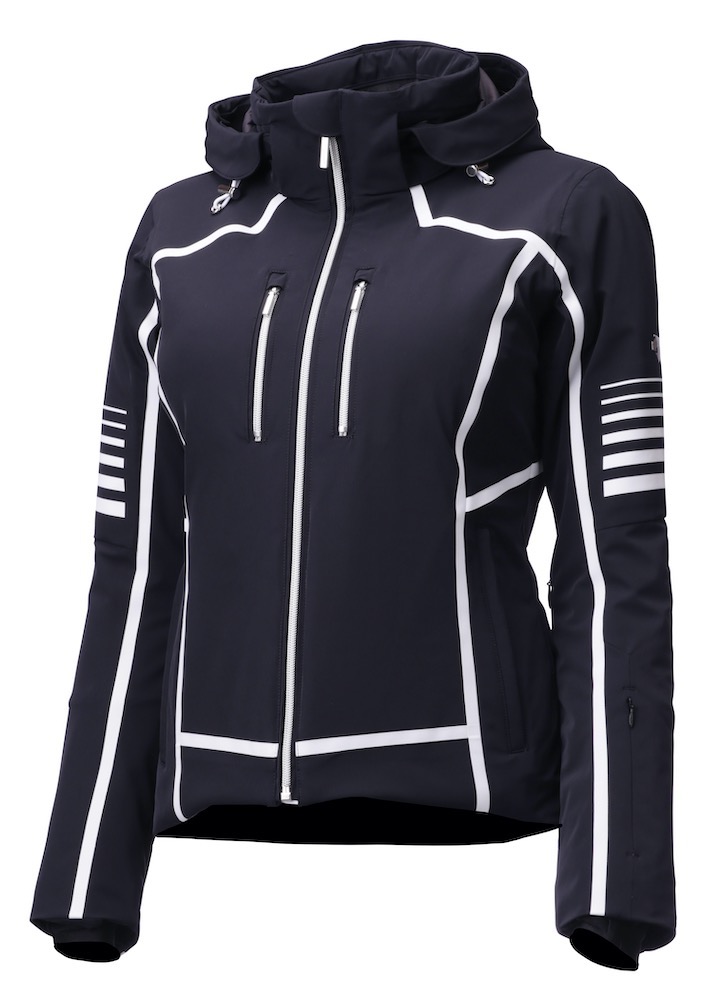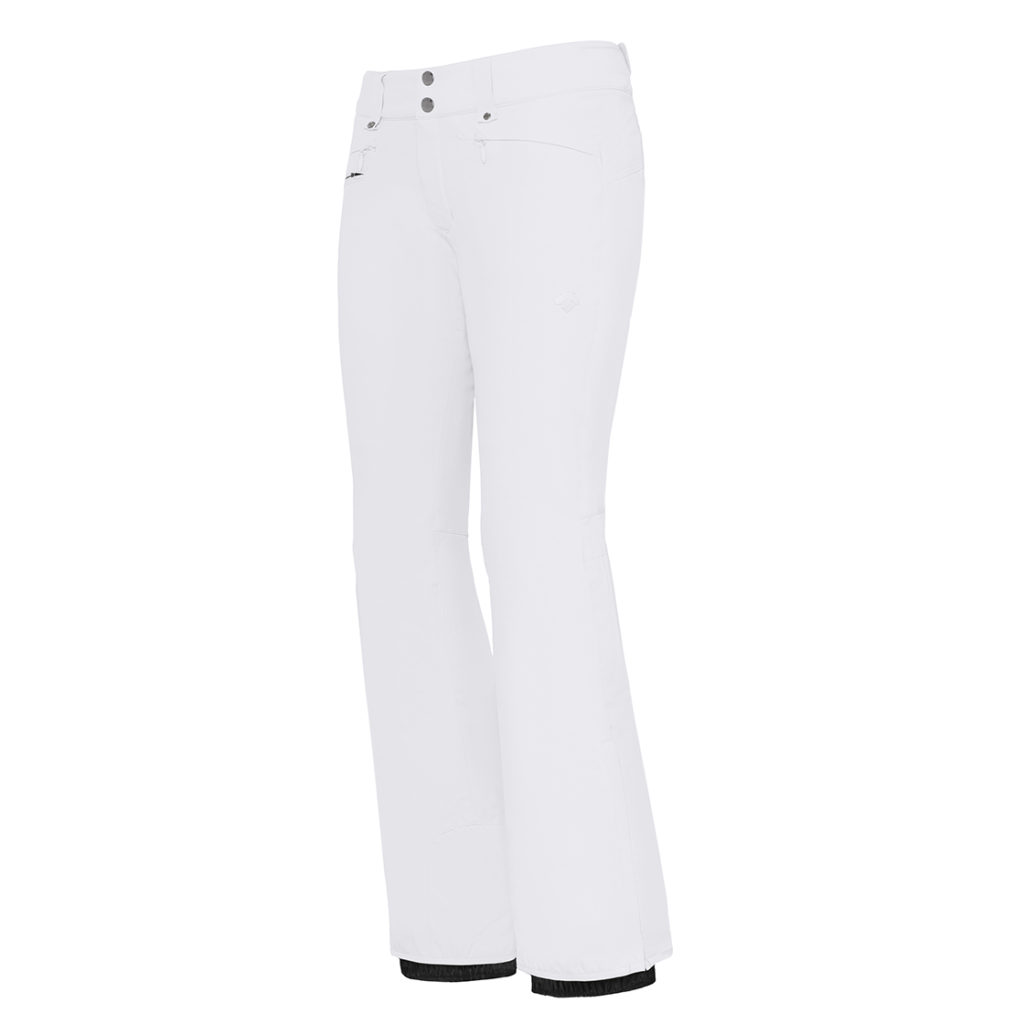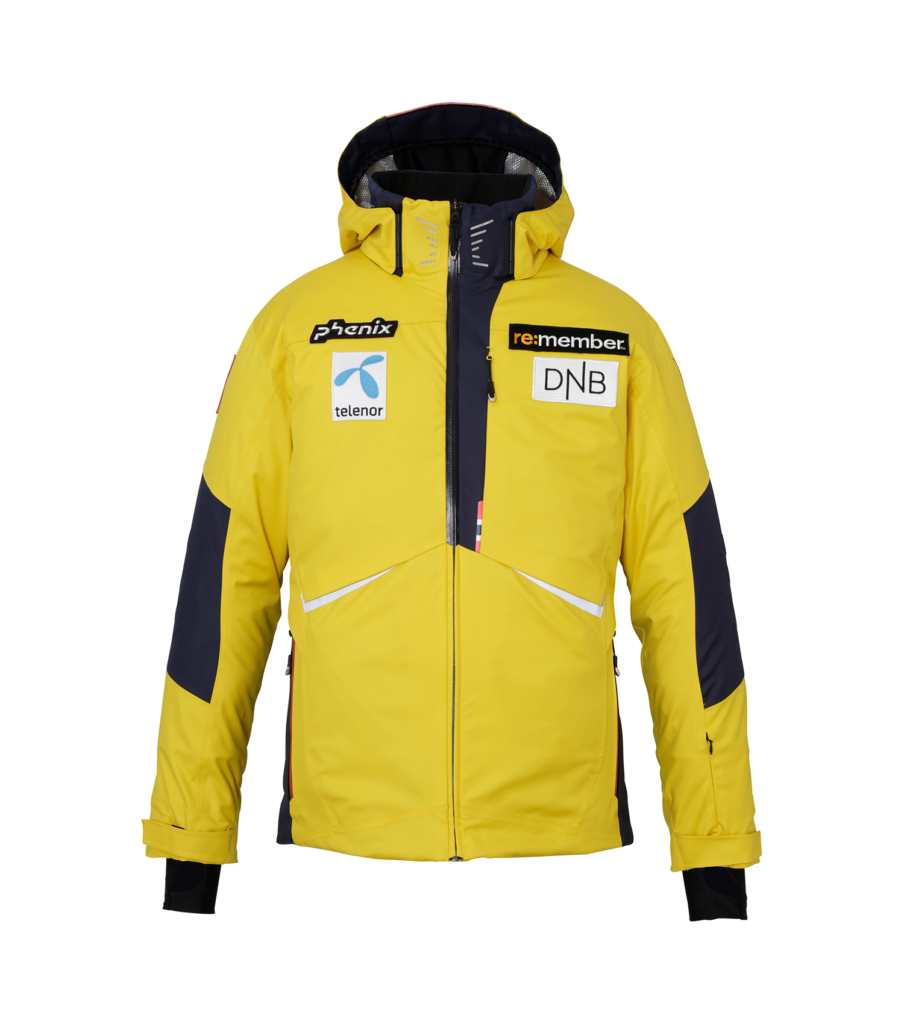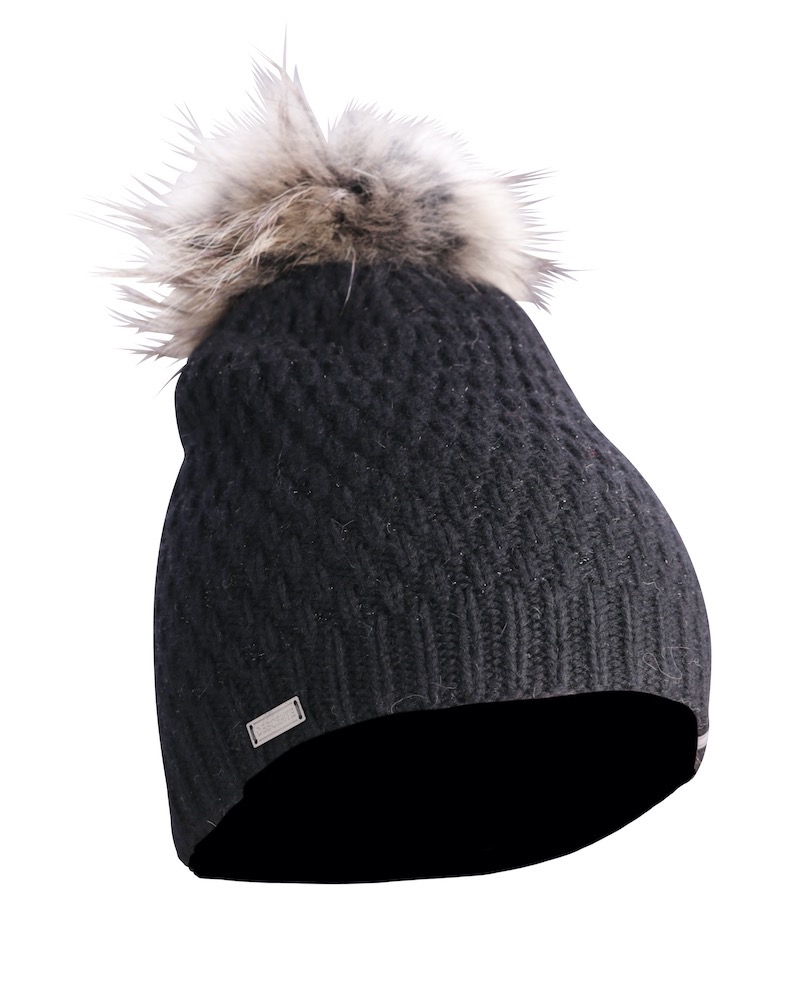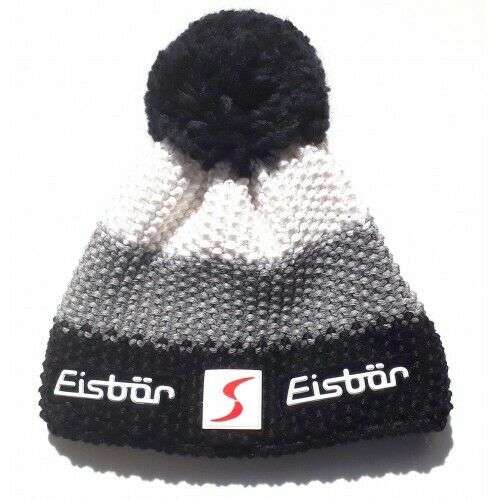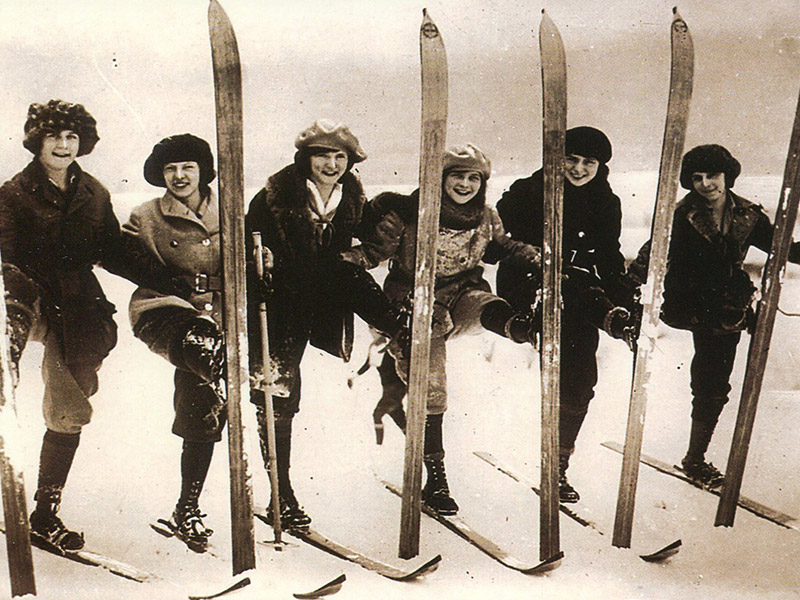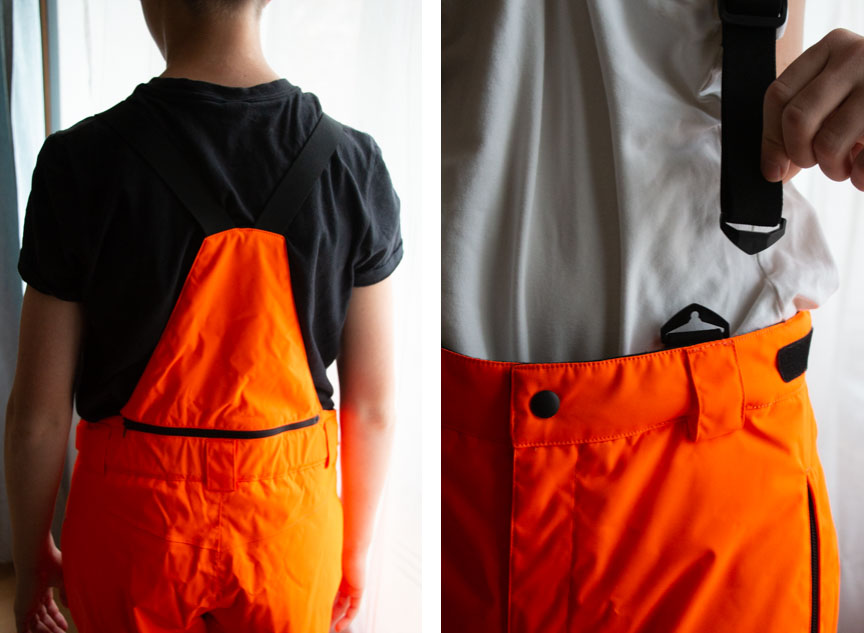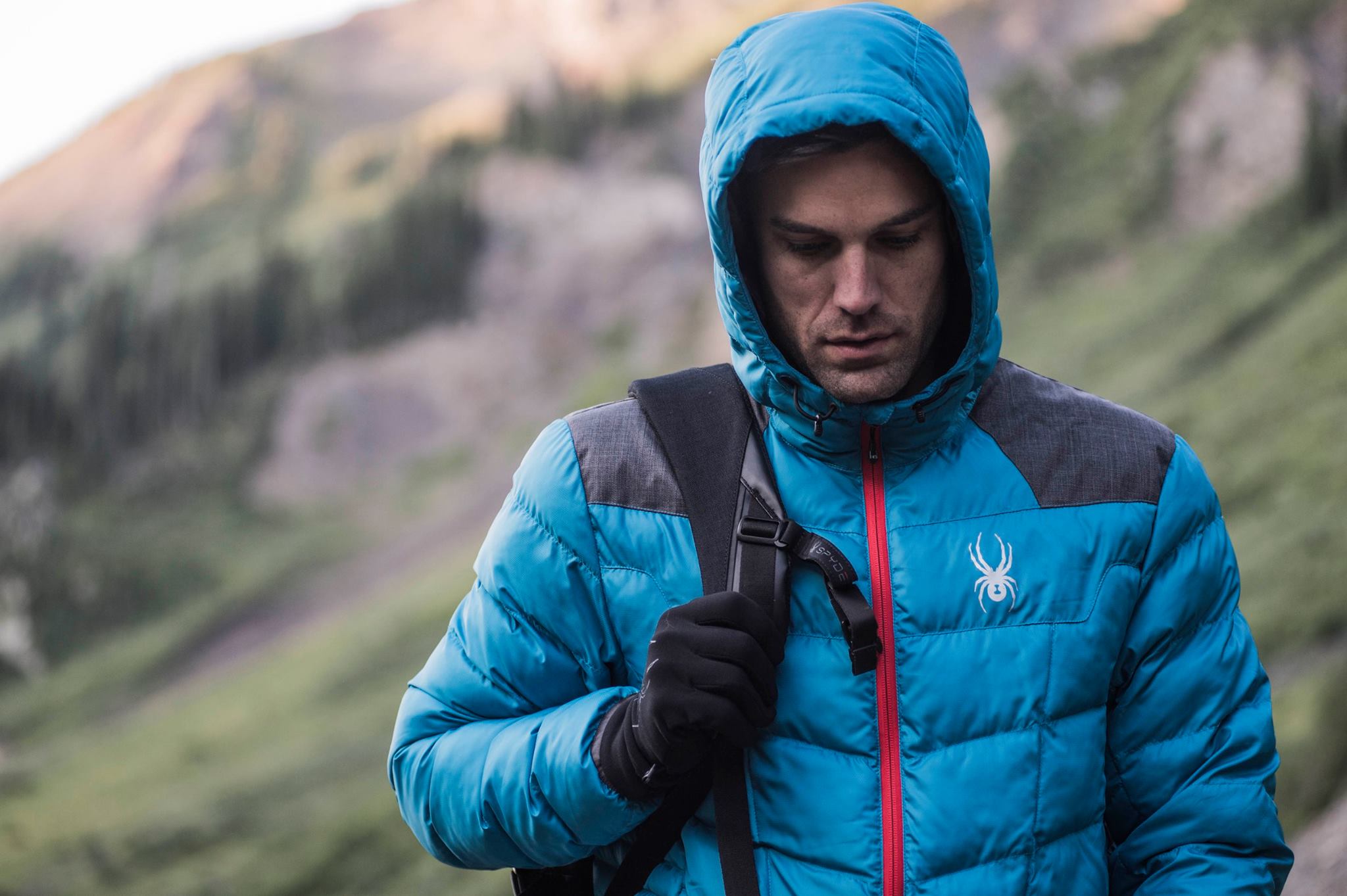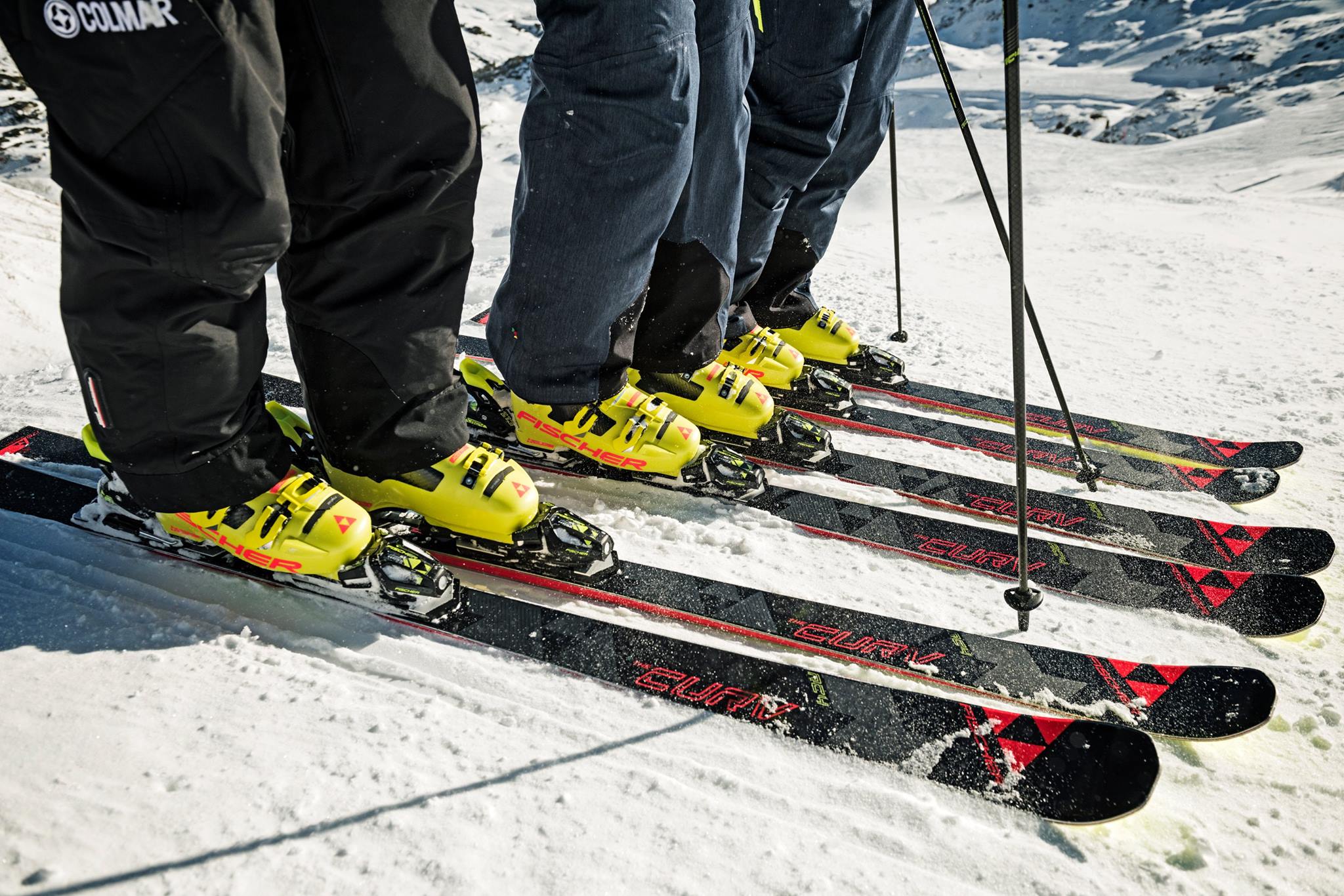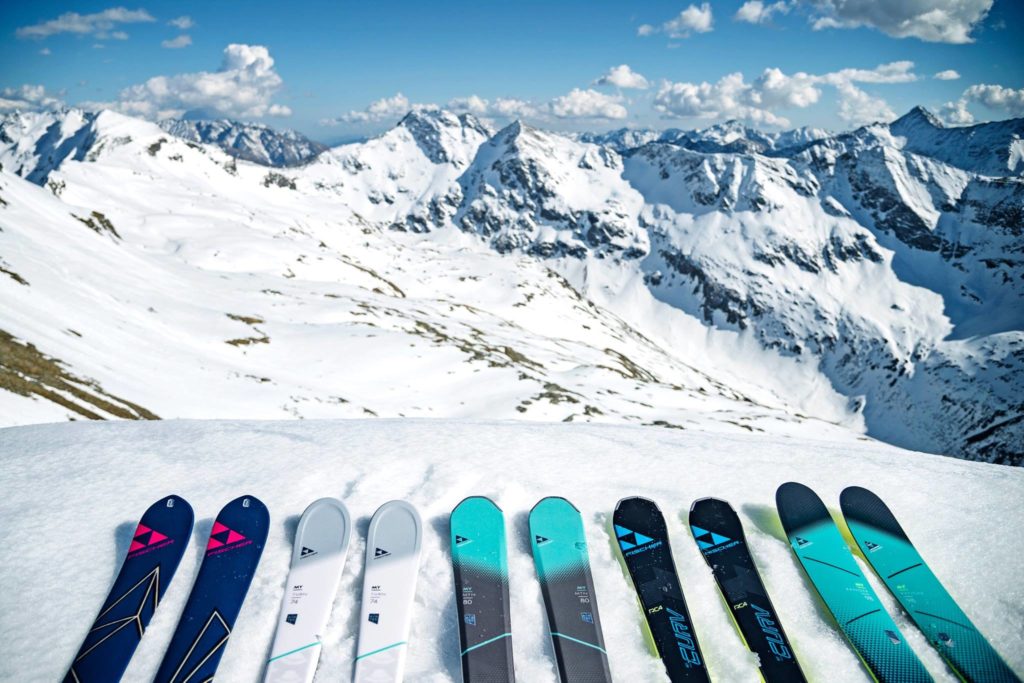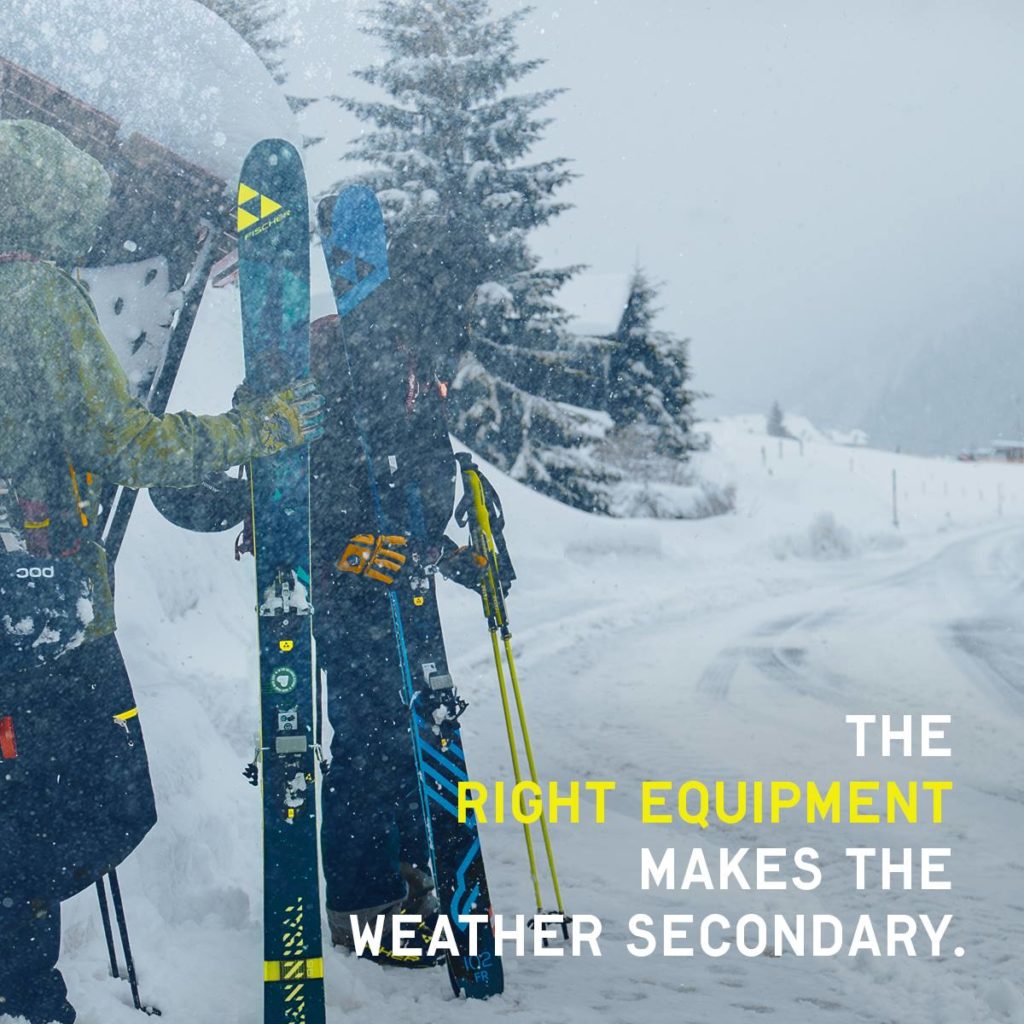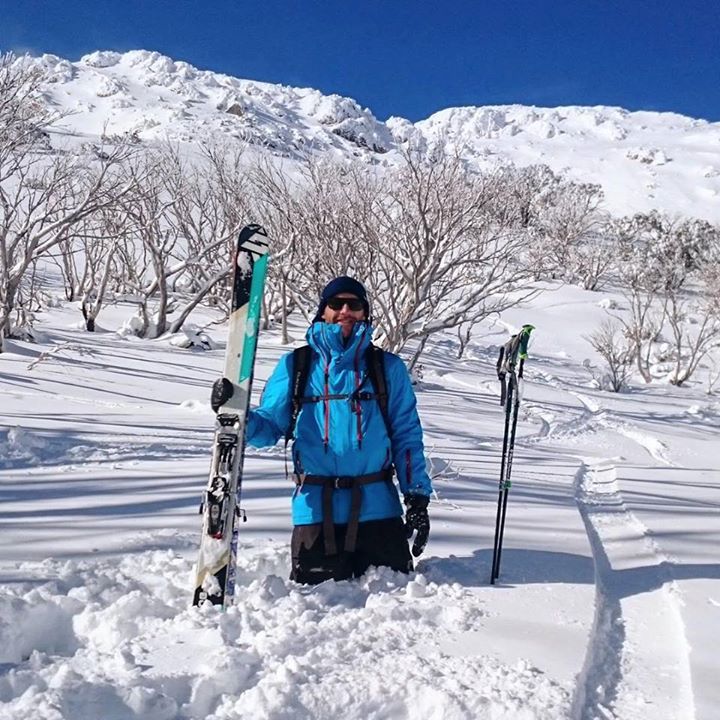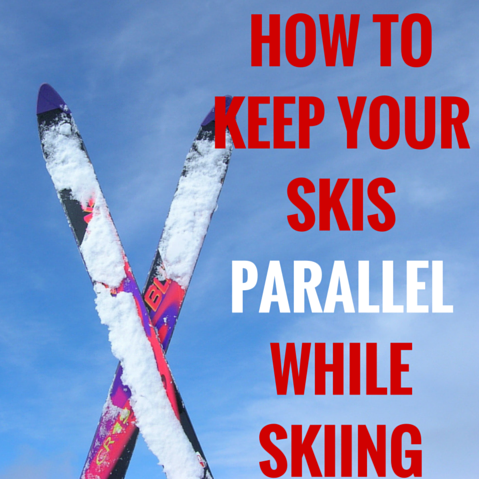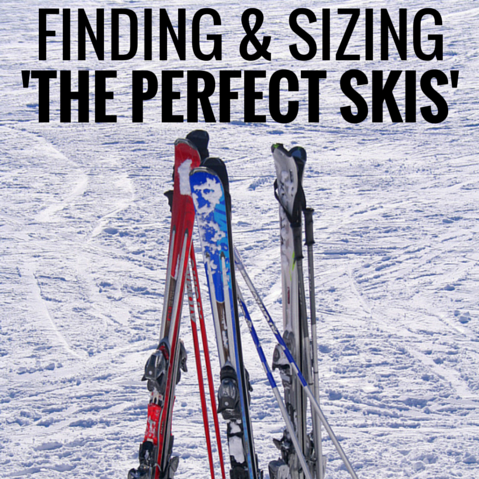Brand name; SPYDER, DESCENTE, PHENIX, KARBON & other Brand name – ski jackets – mix modern style with futuristic technology to give you functional luxury that helps you perform on the mountain. Motion 3D fit in every jacket gives you the freedom of movement you need to conquer challenging terrain and feel comfortable all day long. All Our jackets take standard features such as powder skirts and venting systems and makes them extraordinary by adding grip to the powder skirt to keep it in place and adding collar vents to let moisture from around your face escape easily while still keeping you guarded from the cold and wind.
SKI BUYING GUIDE – LENGTH & HEIGHT – read more on our blog
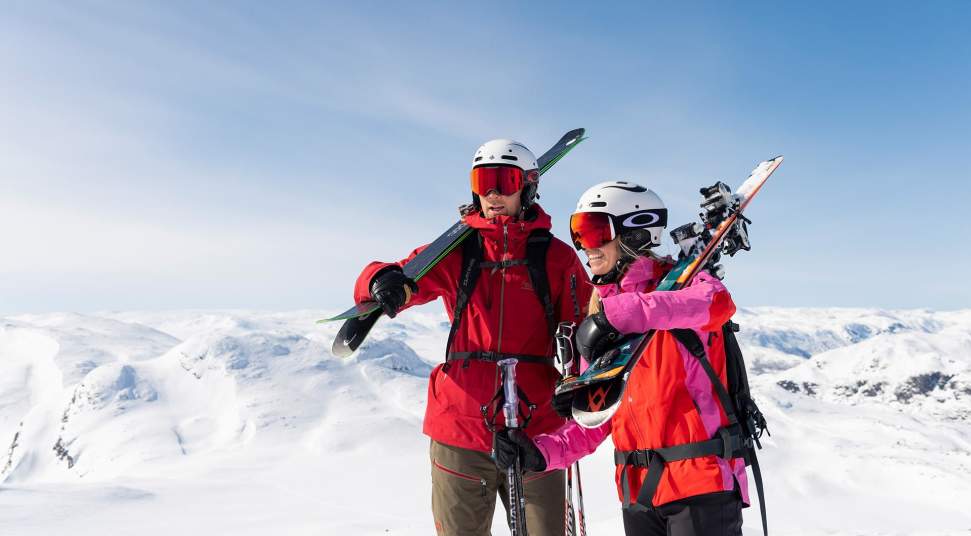
LENGTH
One of the most important things to consider when buying a pair of skis is the length. Ski length is measured in centimeters (cm). The typical rule of thumb is to choose a pair of skis that when standing up straight, are somewhere in between your chin and the top of your head. In reality, there is nothing that will determine the perfect ski length for you, but there are a few things to consider. Your height, ability, and style of skiing all influence what length of skis are appropriate for you.
HEIGHT
Generally speaking, the length of your touring skis should not differ too much from what you typically use at the resort. Some backcountry skiers choose to size down in order to save weight and make the ski feel a little more maneuverable. This makes kick turns easier and can help navigate tight terrain like steep, narrow couloirs. This is perfectly normal, but it’s worth considering what impact this has on your skiing. It’s no good sizing down for an easier time on the skin track if the turns are no fun! If you find yourself between sizes, erring on the shorter side for your touring ski will usually be a good bet.
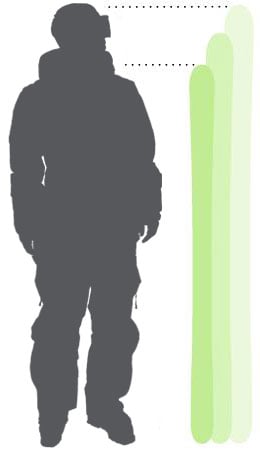
Your choice of length depends greatly on your height. The chart below should be referred to as a base guideline when determining what length of the ski to buy.
| SKIER HEIGHT (FT’IN”) | SKIER HEIGHT IN CENTIMETERS (CM) | SUGGESTED SKI LENGTHS (CM) |
| 4’4″ | 132> | 115-130 |
| 4’6″ | 137 | 125-140 |
| 4’8″ | 142 | 130-145 |
| 4’10” | 147 | 135-150 |
| 5′ | 152 | 135-155 |
| 5’2″ | 158 | 145-165 |
| 5’4″ | 163 | 150-170 |
| 5’6″ | 168 | 155-175 |
| 5’8″ | 173 | 160-180 |
| 5’10” | 178 | 165-185 |
| 6′ | 183 | 170-190 |
| 6’2″ | 188 | 175-195 |
| 6’4″ | 193< | 180+ |
How to Find the Right Size Skis For Kids:
- Measure your child’s height and weight.
- Locate that height on the kids’ ski size chart below.
- Line up their height with the corresponding ski length to get the correct ski size range.
Kids Ski Size Chart
| Age (yrs) | Height (in) | Height (cm) | Weight (lbs) | Weight (kg) | Ski Length (cm) |
| 3 | 37 | 94 | 34 | 14 | 70-80 |
| 4 | 40 | 102 | 37 | 16 | 80-90 |
| 5 | 43 | 109 | 42 | 18 | 90-100 |
| 6 | 45 | 114 | 46 | 21 | 90-110 |
| 7 | 47 | 119 | 50 | 23 | 100-110 |
| 8 | 50 | 127 | 57 | 26 | 110-120 |
| 9 | 53 | 135 | 63 | 29 | 115-120 |
| 10 | 55 | 140 | 70 | 32 | 120-130 |
| 11 | 57 | 145 | 79 | 36 | 130-140 |
| 12 | 59 | 149 | 89 | 41 | 130-140 |
| 13 | 61 | 156 | 100 | 46 | 140-150 |
| 14 | 65 | 164 | 112 | 51 | 150-160 |
What if my child is in between the heights listed on the size chart?
Your child might be between two of the heights listed; in that case, find their weight on the chart. If they are light for their height, you’re going to size a ski to the shorter height, and therefore will end up with shorter skis. If they are heavy for their height, you’ll go off the taller height and end up with longer skis.
Reasons to size kids’ skis shorter, closer to the chest:
- They are a beginner or cautious skier.
- Their weight is lighter than average for their height.
- They like to make short, quick turns and seldom ski fast.
Reasons to size kids’ skis longer, closer to the nose:
- They are skiing fast and aggressively.
- They weigh more than average for their height.
- You want to purchase a ski with room to grow. Children grow fast and there are boots and outerwear designed to accommodate this, however, we do not recommend sizing their skis much bigger than the recommended range.
How to Choose Touring Ski Length
ABILITY
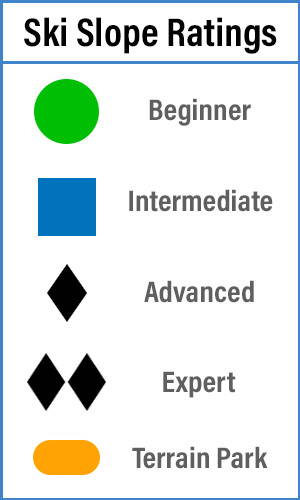

Beginners are new to the sport of skiing. They are still learning how to stay in control and maintain balance on their skis. Generally sticking to bunny hills and green runs.
Intermediate skiers are comfortable linking turns together and maintaining balance on their skis. Generally sticking to green and blue runs.
Advanced skiers have learned proper skiing techniques and have a good command of their skis. They are able to ski both on and off-piste and are comfortable at higher speeds. Able to ski most conditions and black runs
Experts ski fast and aggressively with strong technique. They are able to ski safely and in control of any type of terrain, pitch, and snow condition.
WHY THIS MATTERS
Beginner and intermediate skiers will require a ski that is easier to turn. Shorter skis are more maneuverable, so beginners will prefer a ski on the shorter side. Shorter skis are easier to control but are less stable at high speeds. Something from chin to nose length is suggested for beginners/intermediates.
Advanced and expert skiers, especially those who enjoy skiing fast and in variable conditions, may prefer a longer ski. Something between the eyes and the top of the head. Some experts may even prefer a ski that is taller than they are, especially if the skis have a rocker. Rockered skis have a smaller contact surface (where the base of the ski touches the snow) so skiing them at longer lengths is often recommended.
STYLE OF SKIING
You may want a longer ski if …
- YOU SKI FAST, AGGRESSIVELY, AND STRONGLY.
- YOU LIKE TO SKI OFF-PISTE, BIG MOUNTAIN, AND BACKCOUNTRY TERRAIN.
- YOU’RE BUYING RACKERED AND/OR TWIN TIP SKIS.
- YOU ARE AN EXPERT SKIER AND KNOW WHAT YOU WANT.
You may want a shorter ski if ...
- YOU LIKE TO CARVE IT UP WITH SHORT, TECHNICAL TURNS.
- YOU’RE LEARNING TO SKI (BEGINNER/INTERMEDIATE).
- YOU’RE BUYING A SKI WITH TRADITIONAL CAMBER
How to Ski in All Conditions
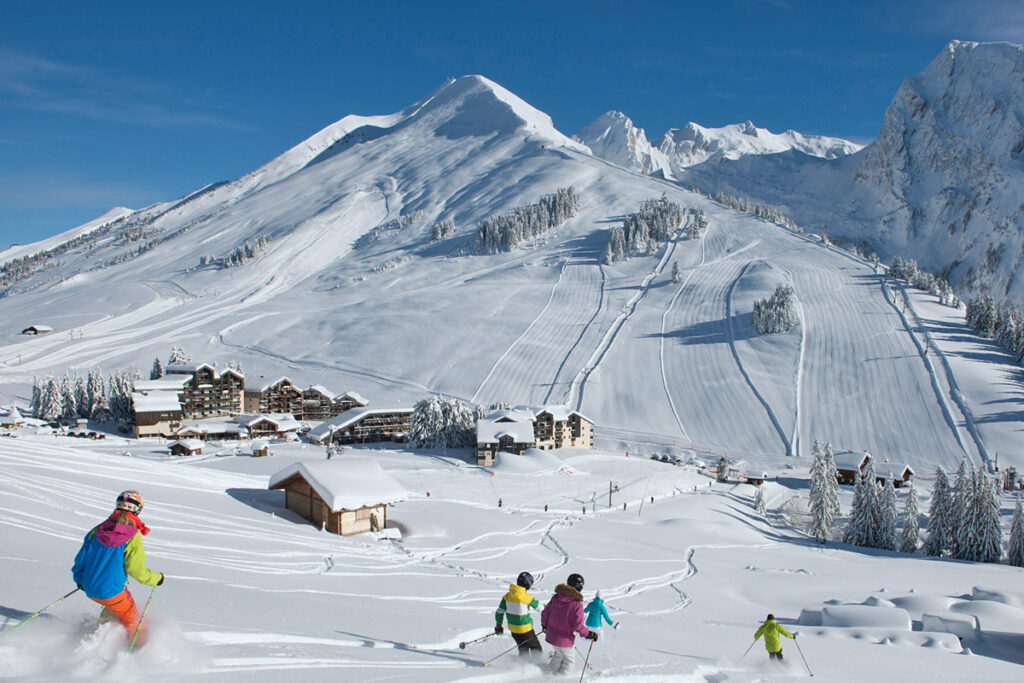
Everyone dreams of a magical day of floating down the mountain, cutting turns on perfectly groomed runs, and billowing through fresh powder. Unfortunately, snow conditions don’t always measure up to your dreams.
But don’t worry! The following techniques and tips will help you tackle various snow types. There are also gear recommendations to make gliding through even the most challenging conditions a whole lot easier. Of course, lessons are always a great option if you want to get some “hands-on” experience and pointers as you go.
Ice
Let’s say that the term “hard pack” is too generous and there’s no mistake that you’re skiing on ice. For skiers, it’s easy to tense up and keep your weight on your heels, but this will only result in losing more control on your turns. Instead, put your hands up and stay forward in your stance, leaning downhill on turns to evenly weigh your skis and to prevent the uphill ski from slipping out from under you. Although you want to use your edges to make turns on ice, you should make shorter, quicker turns and refrain from keeping your edges on the surface for an extended period.
Snowboarders, keep your weight centered on the middle of your feet with knees bent rather than putting too much weight in your heels or toes. Let your board slide with the
Best gear: Stiff slalom skis with narrow cut work best in these conditions. Stiff all-mountain board with edges sharpened to 90 degrees.
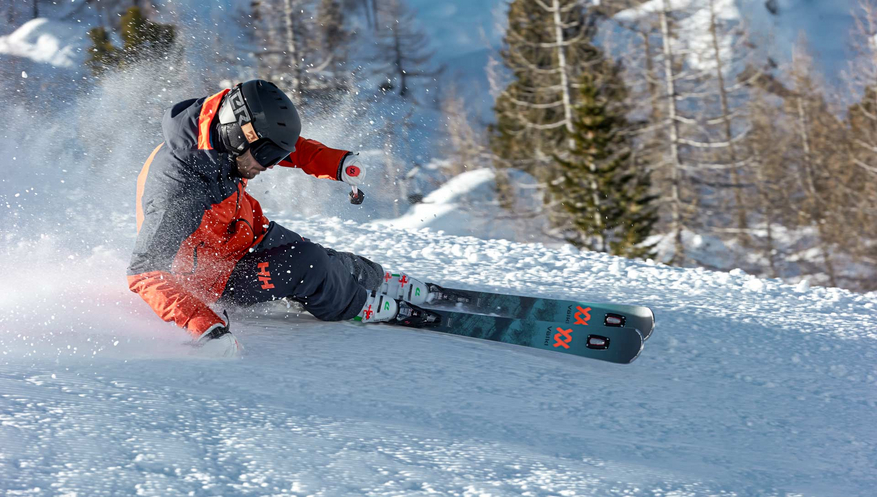
Heavy Snow
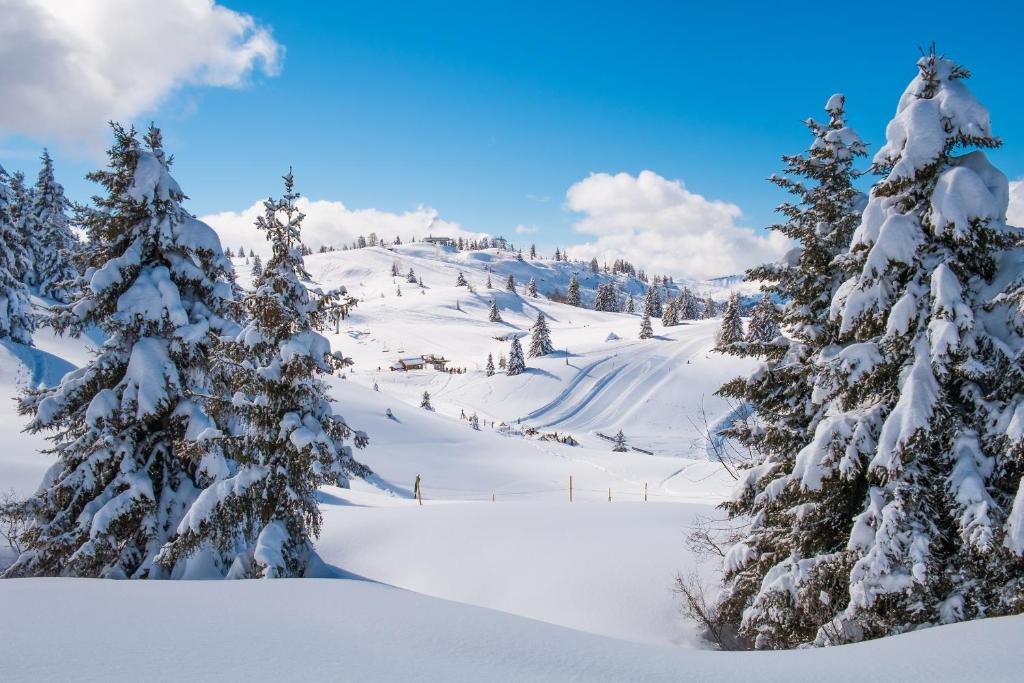
There are many names for this type of snow—including “peanut butter” and “wet cement”—none of which sound appealing. While it might not seem like the most inviting consistency to glide through, fighting half-frozen, thick snow will only make things harder on yourself.
Staying light on your feet with your weight centered is the best way to cope with choppy, inconsistent conditions. You might hit a soft spot one minute and a half-baked block the next. Keeping pressure on the front of your boots, knees bent and hands forward will never be more important.
Best gear: When you’re working with heavy snow, go with fat skis with a rocker, or a stiff powder board with a slight rocker.
Slush
When the sun is shining and warm spring temperatures out in force, the snow takes a turn for the wet and heavy and if you use the right techniques, you’ll have a blast in the slush.
The first thing you have to become comfortable with is sliding around and moving with your skis or board. There’s no holding an edge in this stuff, so be prepared to swing wide on your turns. Keep your weight forward, hands up, and make short, quick turns.
Best gear: Try powder skis with a rocker or a semi-flexible board with a rocker camber when the temps are warm and the snow is slushy.
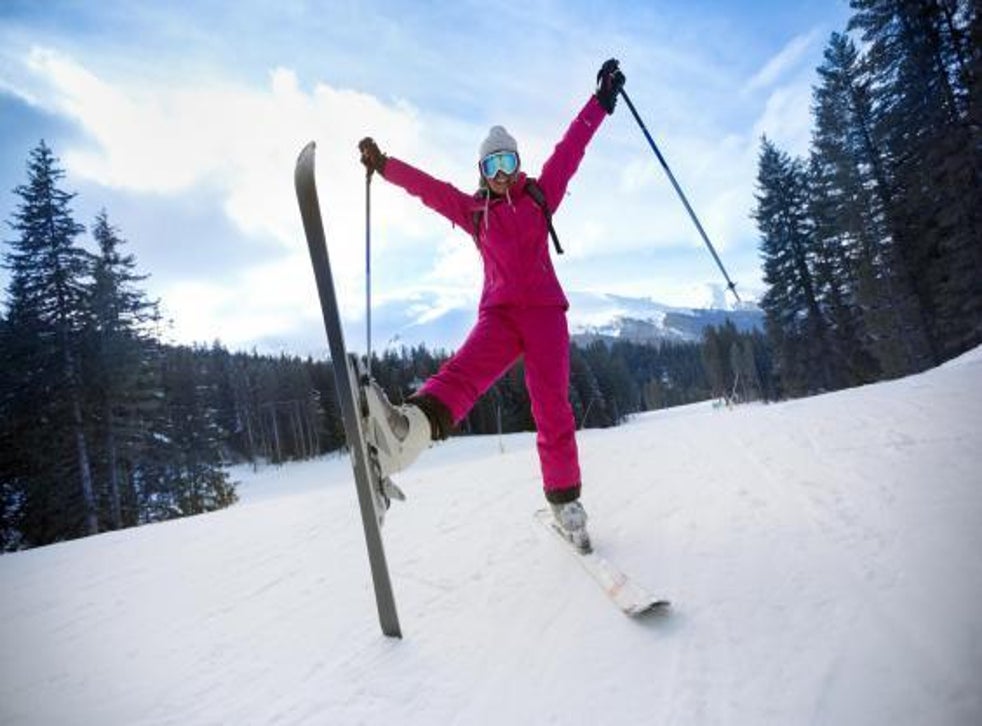
Now stores becoming showrooms or fitting rooms for online shoppers? – read more on our blog
Customers coming into the store to browse and test products, only to subsequently go home and actually complete their purchase online (often through a competitor.)
“Showrooming is when a shopper visits a store to check out a product but then purchases the product online… This occurs because, while many people still prefer seeing and touching the merchandise they buy, many items are available at lower prices through online vendors. As such, local stores essentially become showrooms for online shoppers.”
Like it or not, retailers today are competing with the juggernaut that is Amazon or eBay for every sale, which makes the in-store experience a traditional retailer’s biggest advantage. Yet many fail to make the experience worth a trip to the store, missing out on a key opportunity to bond with their customers.
Most customers like to go to a store to touch and feel a product before they buy it.
Will ask the store to price match a better price they found online.
These concepts are the result of changing consumer shopping habits. Now that many of us shop with a smartphone in hand, more customers are price-checking products on the spot, using online reviews to inform their opinions, and have specific preferences for what kind of products they purchase online and in-store.
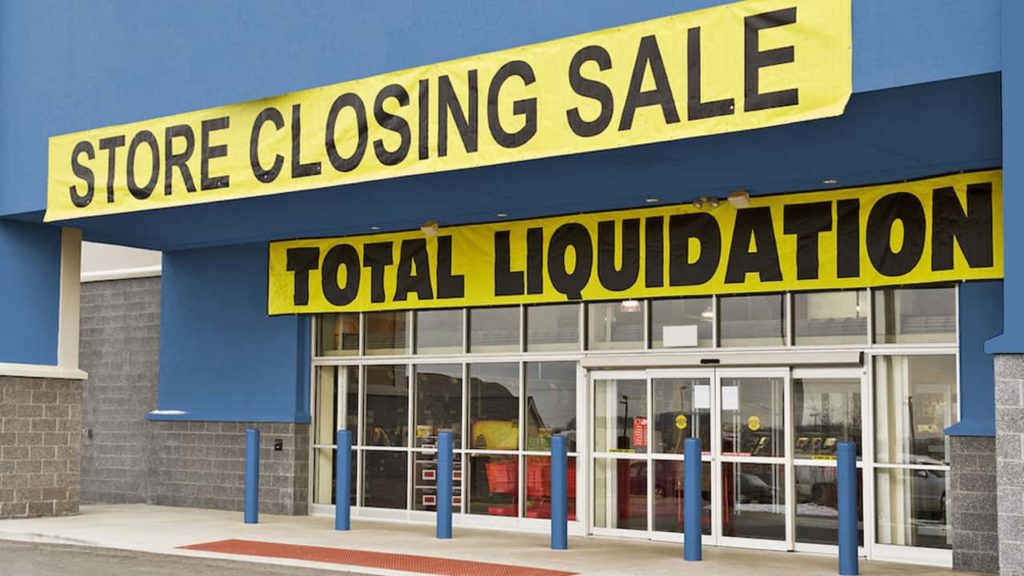
ONE OF THE BIGGEST QUESTIONS FACED BY BRICK-AND-MORTAR RETAILERS TODAY IS WHETHER PRICES SHOULD BE THE SAME ONLINE AND IN STORES. GAINING CLARITY ON THIS ISSUE IS CRITICAL FOR TRADITIONAL RETAILERS TO SUCCESSFULLY COMPETE IN BOTH ENVIRONMENTS.
BRICK-AND-MORTAR RETAILERS HAVE BEEN STRUGGLING WITH PRICING SINCE AMAZON’S INCEPTION, 23 YEARS AGO, SO WHY IS IT SO IMPORTANT TO RESOLVE THIS ISSUE NOW? WELL, THE NEWS FOR RETAILERS KEEPS GETTING WORSE. IT’S CLEAR THAT AN INCREASING NUMBER OF CUSTOMERS DON’T VALUE THE EXPERIENCE OF SHOPPING IN PHYSICAL STORES.
SOLVING THESE PROBLEMS WILL TAKE TIME. BUT IN THE NEAR TERM, RETHINKING PRICING STRATEGIES CAN KEEP RETAILERS AFLOAT.
BUT IF PRICES ARE SET AT WHAT’S PROFITABLE FOR IN-STORE PURCHASES, WEB PRICES WON’T BE COMPETITIVE. A ONE-PRICE-FITS-ALL-CHANNELS MANDATE CAN RESULT IN A ADVANTAGE IN ONE MARKET.
Trusting Online Reviews – read more on our blog
These days, there are a million and one ski & snowboard sites, publications, and channels that are all vying for your attention. How do you figure out what gear is best for you in such a sea of information? Conflicting reviews are everywhere. Forums are full of people arguing about whether product A is better than B or not. The fact of the matter is that it can be nearly impossible to get a true indication of a product without having to sift through a whole lot of paid advertising, influencing, bias, etc. Who can you turn to? Friends and family that have used the same or similar gear would be a good start. They won’t steer you wrong. Beyond that, queue your friendly neighborhood shop! Small, specialized, independent retailers (like us, and many other shops across the country) spend a lot of time and energy on buying the right products for their customers. We have the opportunity to demo a huge range of gear, work with excellent brands and sales reps that help guide us through their catalogs, and ultimately, we spend our time on the shop floor talking to customers and getting a sense of what works for them. We provide ranges of products from trusted manufacturers so that we can provide the best on-hill experiences for our customers. Independent retailers are hands-on in all aspects, not just determining profit margins or bulk discount buying. So, if you have questions, direct them to your local shop. If they carry the products you’re interested in, they’ll give you straight answers about them. If they don’t, they’ll let you know why, and what would be a potential alternative. At the end of the day, you, the consumer, are what matters most to small retailers so it’s in our best interest to ensure you’re given the best information possible. Stop by your local shop to see just what you’ve been missing!
STOP BY AND LET US HELP PICK THE RIGHT SKI OR BOARD FOR YOU!
Why You Should rethink buying Ski boots online – read more on our blog

When a ski boot makes an online publication’s “Best of” list, it does signify that it’s probably a great boot, but that doesn’t mean it’s right for you. These skiers/writers know their stuff, but they don’t have the same feet as you.
But who do you turn to when the Internet can’t be relied upon?
If only there were a person with expert knowledge about boots and feet, conveniently located where ski equipment is sold. Let me introduce you to a ski shop boot fitter. A good boot fitter is like a barber and a mechanic wrapped up into one individual. They know ski boots inside and out (literally) and can tailor the right one to an individual’s specific foot and skiing style.

Good boot fitter would sit on the bench for an examination. These types of interactions always started with a conversation: “Where do you normally ski, what type of skiing do you like to do, how often do you ski…” and so on. Then the boots would come off and the liners peeled from the shells. The boot fitter would perform a shell fit — the skier places his bare foot into the plastic ski boot shell with toes just touching the front of the boot and the fitter measures the leftover space in the heel by fingers.
Our shop’s boot fitter spends roughly an hour to analyze a customer’s feet and stance to size them up in multiple pairs of boots from different brands to find just the right one. Most opt for heat-molded custom footbeds and liners. Almost every skier who bought a new pair of boots leaves our shop happy, with a strong notion that the experience and the cost were worth it.
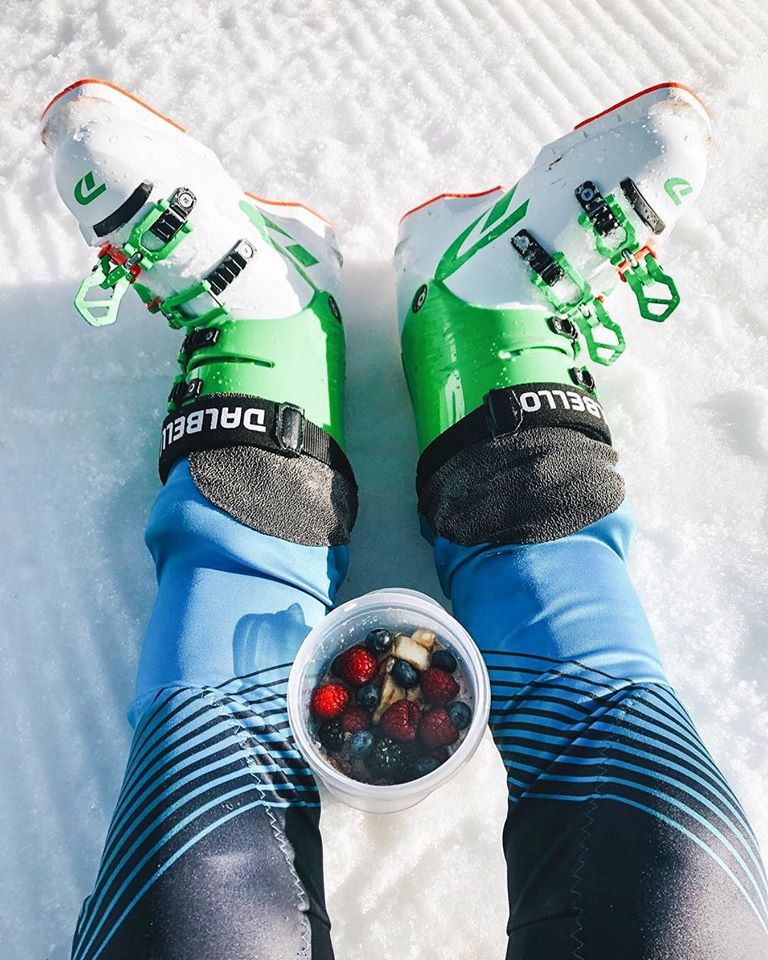
YOUR FEET WILL THANK YOU
PS. IN OUR SKI SHOP WE TAKE CARE OF YOUR FEET
Qualified sales person provide boots that fit your feet
Be Caution – read more on our blog
SHOPPING:
Don’t be greedy, the common reason why people fall for scams is that they are greedy. Scams are usually offering a deal that is too good to be true. An example of a scam is an advertisement is offering a advance ski package for $200.
Now a day the world is growing enormously in many technologies. Many modern new technology mobile phones do have internet facilities. So it is the other way for the people to purchase the product through mobile phones if they got an internet connection
While online shopping has many advantages, it has also got its own drawbacks. Not every online shopper is happy with their online shopping experiences. You can say more than half of online shoppers might face problems while shopping online. In this blog, we will discuss various disadvantages of online shopping.
The internet has changed how we shop. But for many things, you’re still better off buying the old-fashioned way.
Online stores are highly competitive, not only with other online stores but also with brick-and-mortar competitors. Price-comparison websites make deal hunting easier and also help guide shoppers to online stores with the best reputations by posting reviews submitted by other shoppers.
Fraud in online shopping is the biggest disadvantage of online shopping. Many people are attracted by great offers which seem too good to be true. Fake online shopping portals display some great products on the website and attract customers to buy the product. Usually, websites which sell fake products instead of the genuine article, do not accept cash on delivery and request customers to make an online payment. But, in the end, customers will either receive the fake product or they will not receive the product at all. There are many cases of cybercrime where customers debit or credit cards details are misused to make fraudulent transactions
With the click of a mouse, you can order everything from clothing to food. However, there are some items you should just buy at a brick-and-mortar store. Certain purchases could be a risky buy if you put them in your virtual cart and have them shipped to you, sight unseen. Sometimes, a picture on a website isn’t enough information to go on, even if there are reviews. But online shopping isn’t for everything.
Our Knowledgeable Staff
Specialty stores have an advantage when it comes to staffing and training. Employees only need to know or learn about one type of merchandise. For example, a Ski shop or sporting goods store can employ sales staff with backgrounds in team sports and personal fitness. This provides an advantage over general retailers, whose staff are less likely to know about all of the products available to customers
Disadvantages of Shopping Online
Sometimes a deal that looks great falls short of what has been advertised. Communicating dissatisfaction can be difficult online and often takes enormous patience and tenacity to achieve satisfaction. Problem-solving face-to-face with local store employees is often faster and more satisfying. Contacting the next level of management is much easier at local stores than online.
Clothing from a brand you’ve never worn
It’s not uncommon to be a different size depending on the brand. You could take a chance and rely on the size chart (if there is one), but why go through the hassle of receiving the wrong size and having to make a return? Save yourself the headache and head on over to the store for clothing from a brand you’re not familiar with. Colors also tend to look different online, so if you’re particular about color, that’s another reason it pays to make your purchase in a physical store.
- Online shoppers do not have the ability to physically inspect or try on the items being considered for purchase.
- Online shoppers sometimes lose the power to negotiate the price and payment terms that may exist in local stores.
- Items ordered online are sometimes back-ordered, but shoppers may not find out until weeks later. This is particularly problematic when buying gifts.
- Online shoppers do not always know if a site is a legitimate retail store and if is safe to shop.
- Restocking and shipping costs are often charged on returns.
- Online shoppers often do not have a person (or the same person) to talk to when dealing with a problem.
- It is sometimes easier to get the money refunded locally when the item purchased drops in price within the guaranteed price period.
Hidden costs and shipping charges
When you first see the product on a portal, it generally looks cheaper. But when you proceed with the payment, the extra charges like shipping charges, tax and packing charges are added. These charges will make the product expensive vis-a-vis the local store. Some portals offer free shipping if you shop more than a certain amount. Sometimes just to avail free shipping, you end up shopping more than your requirement.
Lack of interaction
In case of offline shopping, sales assistants shower personal attention on customers and give complete details on the product. If you have any queries, you can ask right there. But, this does not happen in the case of online shopping. All you can do is see the picture and read the description. Some portals allow shoppers check the customer reviews.
Returning the product
There is an option to return the product, if you do not like it. But again, it is a big headache. The return policy differs from one company to other. In case of some online shopping portals, customers have to bear the cost of returning the product.
SKI BOOT PROBLEMS

Ski boot sizes come in ‘Mondo Point’. This is a sizing system that was developed in the 1970s by the International Organisation for Standardisation (ISO) to create a universal sizing scale specifically for ski boots. Mondo (meaning ‘world’) is calculated by measuring the length of your foot in centimetres, from the heel to the big toe. Mondo point is universal for all ski boots and seeing a professional boot fitter is the best way to find out your correct ski boot size. Our boot fitters at Goskand Ski Shop, have all the necessary apparatus to get an accurate measurement. The width of your foot is also considered, as ski boots can come in varied widths just as you can with regular shoes.
Renting or Owning
When looking at getting fitted and buying your own ski boots – there are many factors that can be addressed, especially with the width and sizes foot issues that comes with. Of course, there are many different foot shapes, so it is important to get the best fit for you. Professional fitters such as ours at Goskand will go through the options to suit your needs so you can confidently use your boots with little to no issues, due to the correct fitting and sizing procedures.
“Have I done them too tight or too loose?”
Most of the time we think that the tighter, the better and therefore the more secure. When it comes to ski boots, this isn’t always the case. There is a better method to staying secure and comfortable in your ski boots without trying to squeeze the life out of your buckles.
When you are in the ski boot with everything just resting or undone, you can tap the heel of your ski boots so that you feel your heel get right back into the correct position. If there is too much space between the heel and the back of your ski boot, you will create issues with comfort and it can affect the way you are skiing.
Next pull in your power strap which can be done fairly firm. Then you would look to your second buckle down from the top that sit between the shin and ankle. This does most of the work of holding your ankle and heel in place and should be tightened as far it goes before it starts to become painful. Your top buckle can be done in the same way, and then check if you can adjust the second one anymore. The bottom two buckles over the top of the foot should be on the loosest setting as these are mainly just for keeping the ski boot shell together and keep snow out. Remember to use the micro-adjustment on your buckles for precision. If your foot is still slipping or rolling around in the bottom of the boot – they are too wide for you!
It is a common problem that the arch of your foot will start to ache and feel uncomfortable. This normally boils down to lack of support. With no support there, the ankle rolls in and can flatten your arches.
“Why are my feet still cold whilst wearing ski socks?”
When it comes to staying warm, we often think ‘more is better’. However, the thicker the layers, the less likely your body will react in the right way. Less definitely is more, even with ski socks.
When we have a sock too thick in the ski boot, this is likely to cause more tightness or pinching around the shins, which leads to a cut off in circulation and therefore not enough warm blood getting to those extremities. We recommend a thinner sock made out of better materials such as merino wool. They may look a lot thinner, but the fabric reacts with your body in an essential way to keep the natural warmth in and stay very comfortable all day whilst skiing. As well as the amount of material, there are specific areas in ski socks that help your foot stay comfortable. This can be articulated areas around the ankle or toe box, or varying thicknesses where it’s needed most. You can ask one of our shop and ski boot technicians about the ski sock options available at Goskand Store.
Hand Out gloves
Discover new arrivals & latest discounts in Hand Out Gloves Ski from your favorite brands. Shop Now!
We offer a variety of glove and mitten styles to satisfy any skier or snowboarder.
How do you keep your hands from getting cold and keep them warm while spending the entire day outside skiing and snowboarding?
I shall offer my thoughts… my experience and expertise:
The blood vessels that deliver blood to your hands and fingers come very close to the outer surface of the skin on the inside of your wrist. They need to be protected and insulated.
Your skin has to breathe!
The glove needs to balance it’s “water-proofness” by focusing as much on interior sweat moisture production as exterior water penetration. Forget “waterproof” membranes unless it’s really wet, where air temperature is not the problem.
Somebody asked me the other day, “What is the warmest ski glove?”
The person asking the question, What is the warmest ski glove, is actually asking a very complicated question, which should be answered with a series of other questions and comments:
1) What do you intend to do, specifically, with these gloves? Resort ski, backcountry ski, snowmobile, snow kite, snow ball fight, winter construction, ski patrolling, sit-out-in-the-cold-and-drink-beer…
2) Do your hands tend to sweat a lot? If they do, you need to be very concerned about the terrible cold that most-of-the-time follows hand sweats in very cold conditions.
The reality and correct answer is, the warmest ski glove IN MOST CONDITIONS AND ON MOST DAYS is one that is dry, has sufficient insulation, but not too much, and the best dexterity and grip for the current activity that you are undertaking.
So my official answer is, glove with the best insulation that breathes the best.
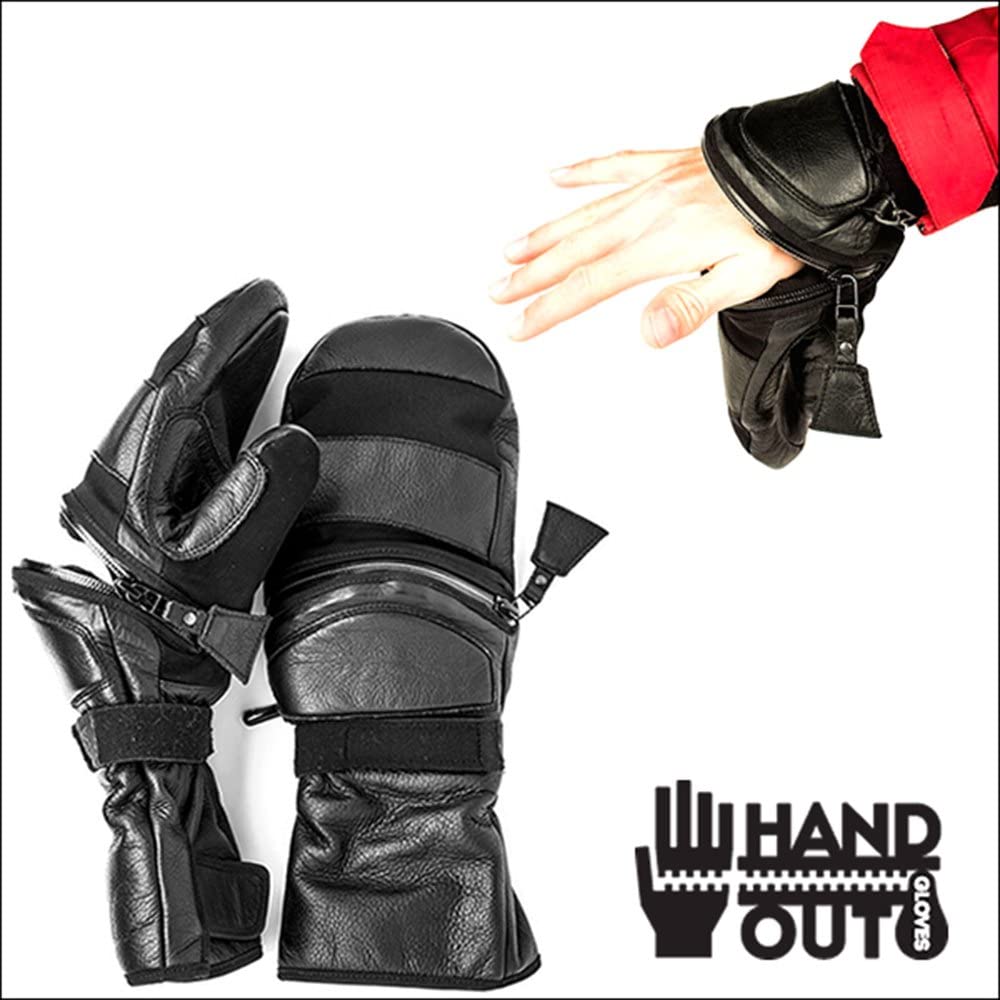
Nobody enjoys taking their ski gloves off for any reason. Not only do your fingers get numb, but taking gloves on and off is just a pain, especially if you prefer under-the-cuff gloves.
Hand Out Gloves are in a category all their own. They’re leather, waterproof, breathable gloves that can be easily zipped open so you can do things like take a pic or tie a fishing line while keeping your hands warm.
What’s the deal with these gloves?”
Aside from the clever zipper, they’re also durable gloves made to last. They’re made from leather and they have waterproof, breathable Hipora linings.
It’s great on the lift, in the wind, in lots of powder–you won’t lose your gloves.
The zipper is perfect! Easy to zip and unzip.
You can use the zipper as a vent to let heat out and stop sweating.
They really are waterproof and the leather is nice.
They are really warm.
They dry really fast because you can unzip and have more air flow through the whole glove.
Also saw some new synthetic gloves and noeprene gloves from HandOut at Goskand Ski Shop. They look awesome and are slightly more affordable than the leather.
Yep, the HandOut gloves are my new favorites!! I love them. I’m excited about this simple, great glove on the Goskand Ski Shop and loving using them daily at the ski resort and in the ski cross country
Price – $129
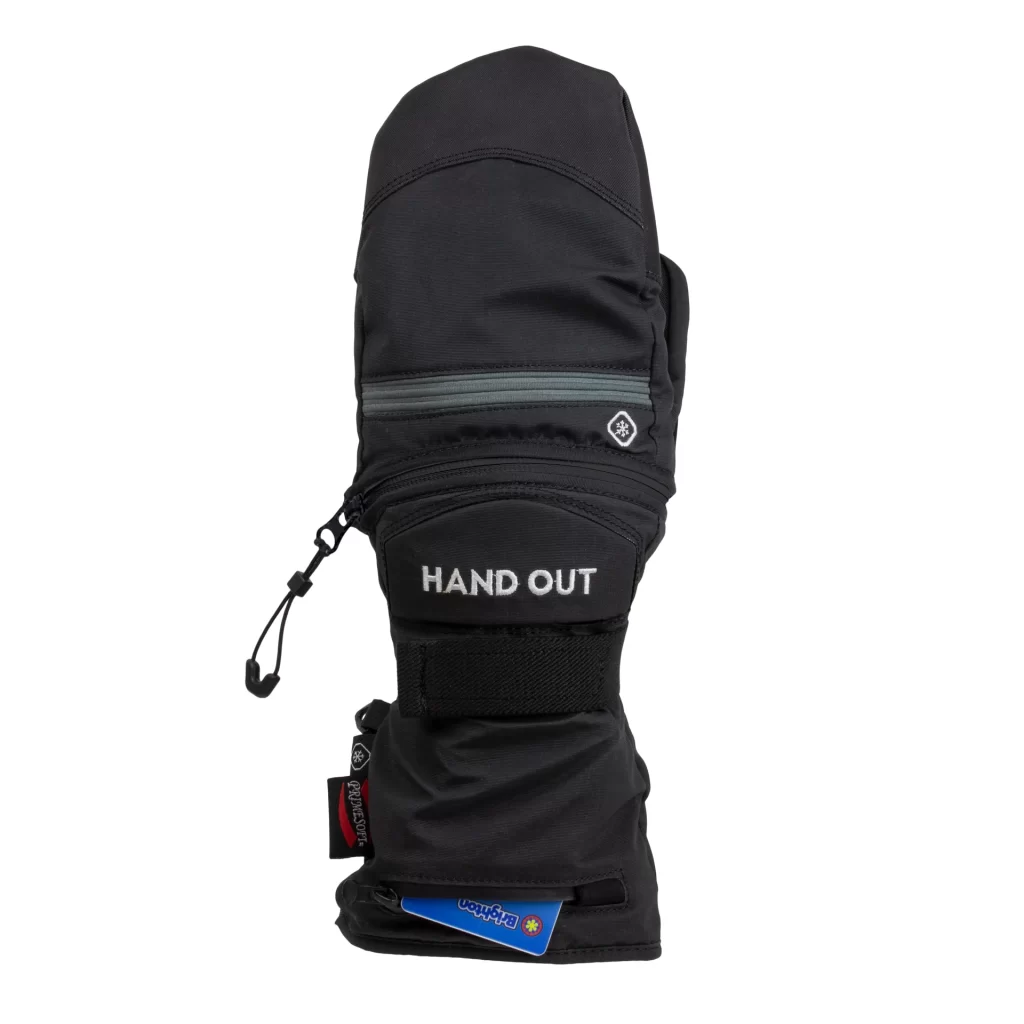
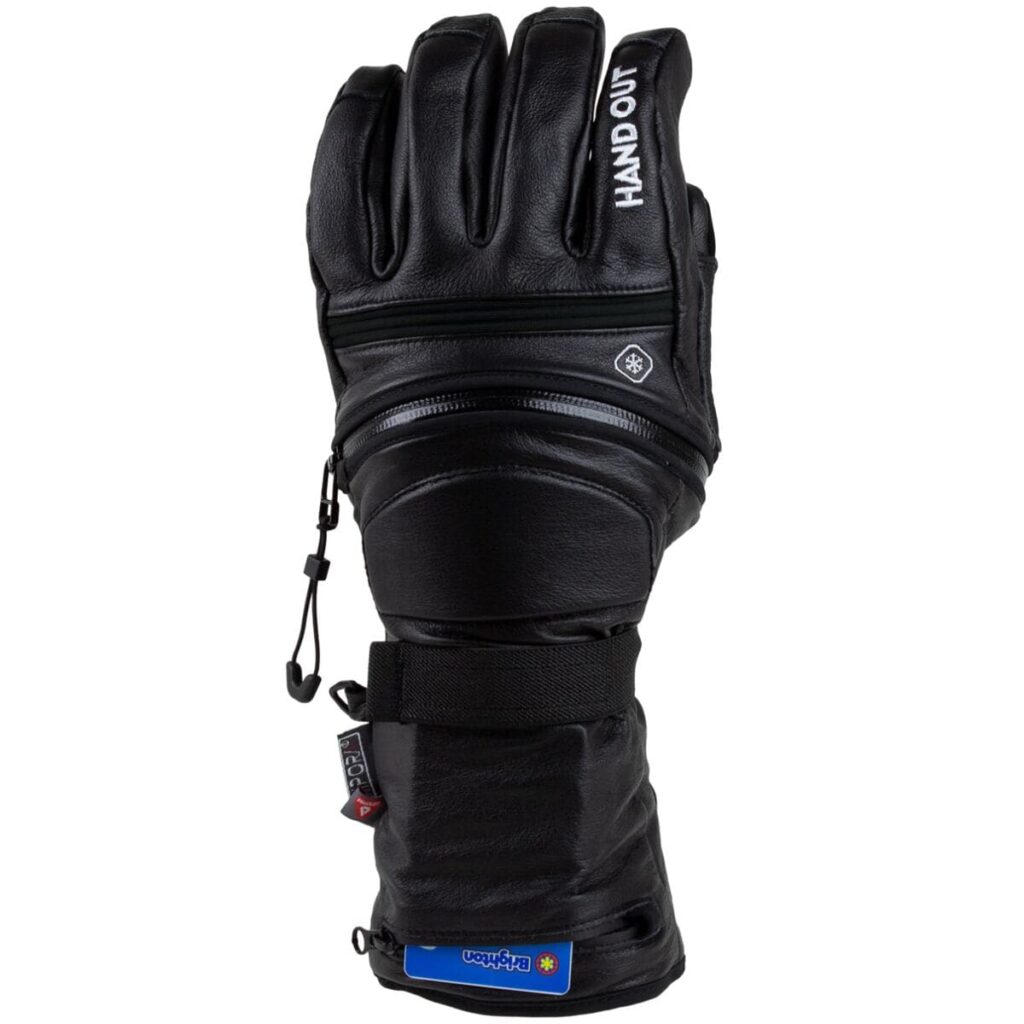
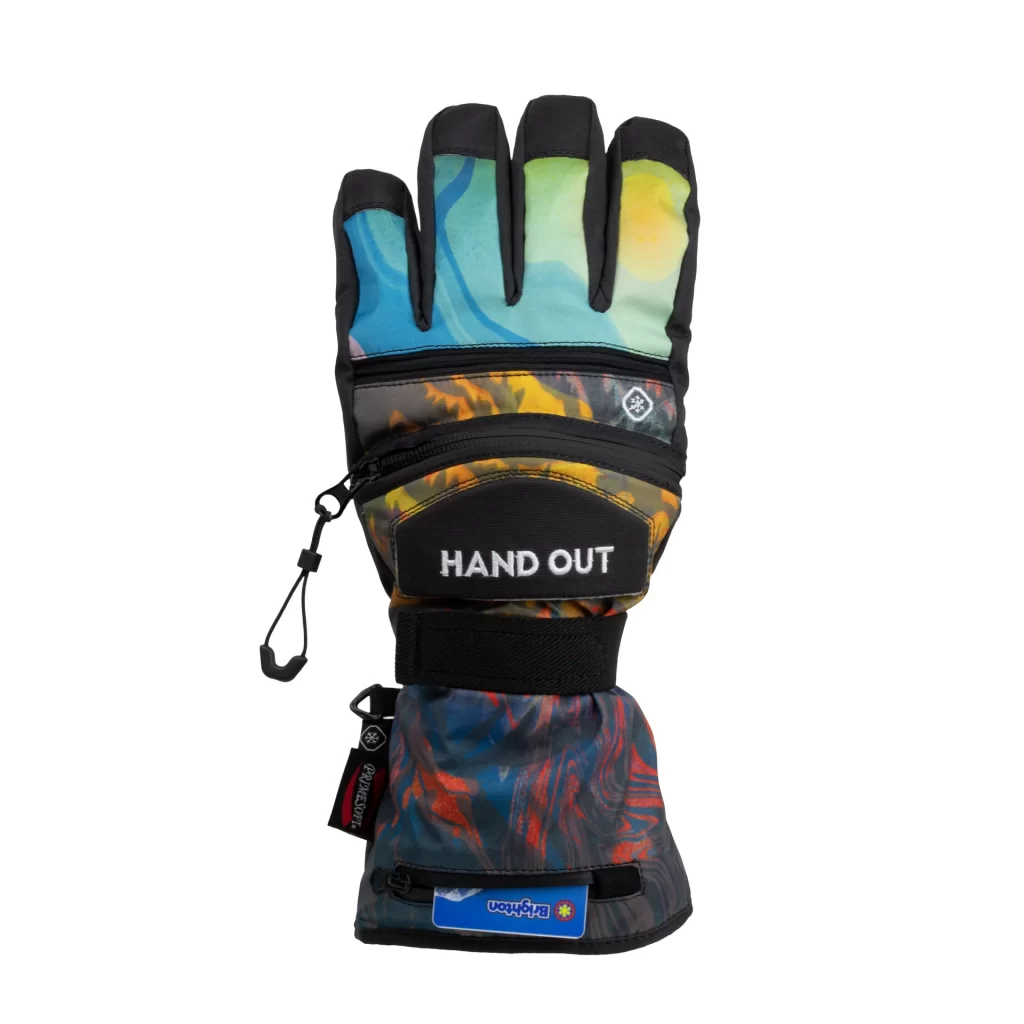
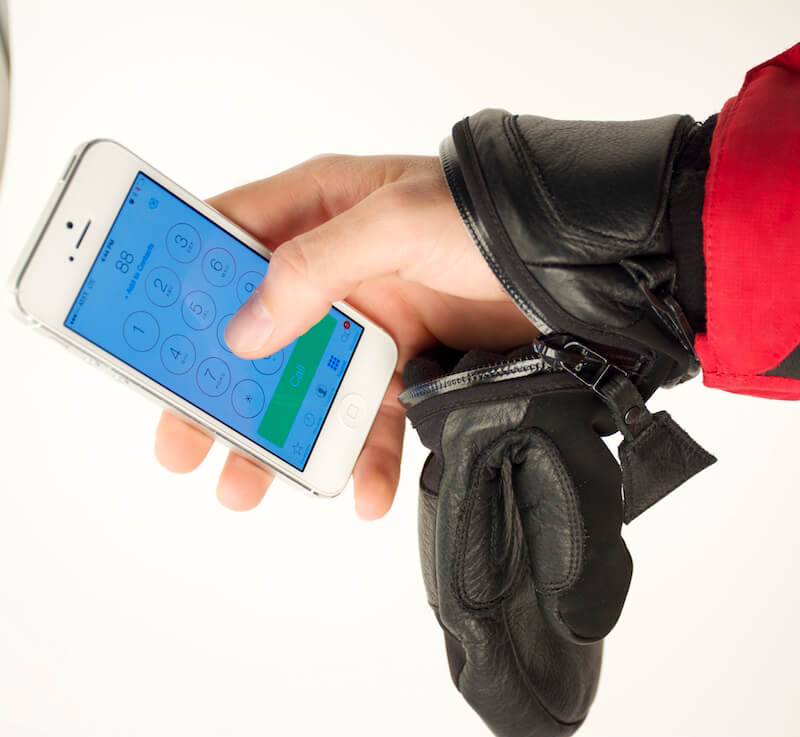

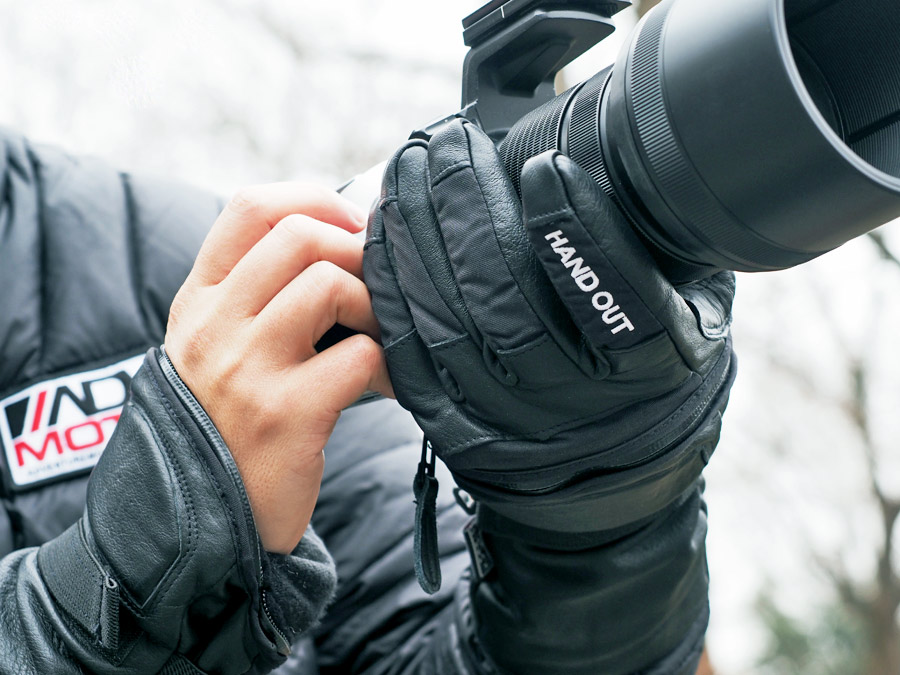
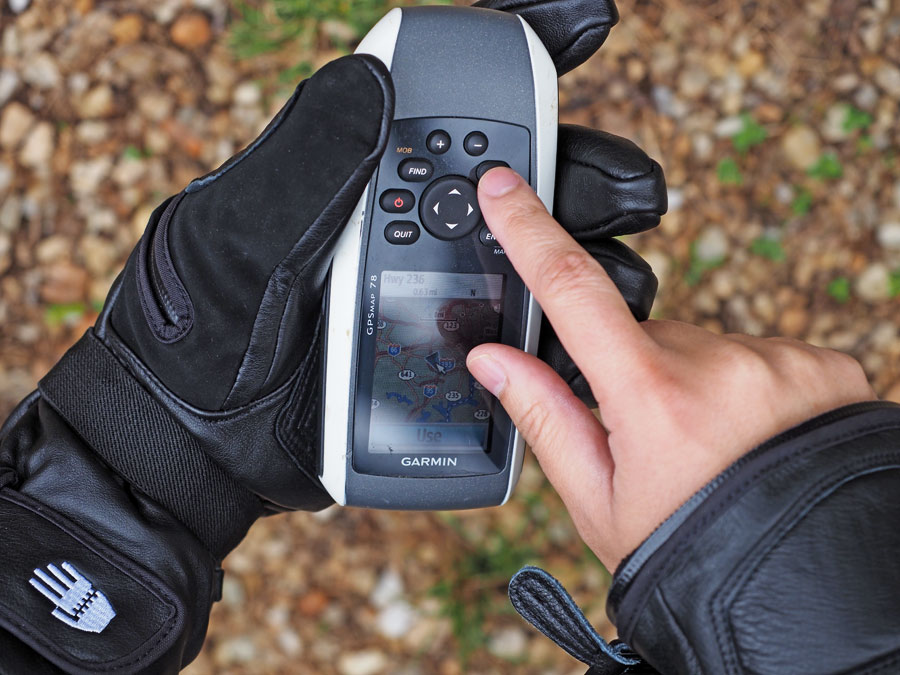
P.S. Is me getting paid for that advertise ? Nope, they’re just great gloves. Am I getting paid to write this review ? Nope- just stoked on gloves!
How to keep skis parallel while skiing
Keeping skis parallel to each other can be difficult, especially when you are skiing down an uneven hill. But if you don’t do it, guess what? You’ll wipe out faster than you can say: “oops!” And hopefully, it won’t be a dangerous fall.
So, in this lesson, you’ll learn how to keep your skis parallel to each other while skiing. Not only is this a must have skill for you to learn that will keep you safe on the hill, but it’ll allow you to try new tricks. How cool is that?
Before 1980″s the “desired” skiing style was having legs very tight together so that the two skis were in “parallel” at all times. The “lower” level skiers would open up into a pie shaped arrangement during the turn. This was called “stem christien”. The experts would keep legs together showing the lesser ones that they are the “alpha” males (and some females). Very much like dogs that keep their tails high to show social strata!
Many tears ago for skiers wishing to be level 3 ski instructors they had to ski down terrain with varied inclinations with a red handkerchief stuck between their knees. Open just once, you failed the examination since the red handkerchief would fall to snow!. That is parallel skiing at its best. Few skiers, except some “old instructors” ski this way now!
Why?
Equipment has evolved resulting in a more dynamic skiing style. Boots have a softer flex, skis are more “shaped” for effective ski performance.
Due to the major changes in equipment skiing has really become easier. Really! But changes, any changes for some is difficult ,,,,,,initially!
Carving means that you use the ski effectively. The skier carves the ski run very much like you using a knife, from one edge (of one ski) to the other edge ( of the other ski). In short, in a carving ski technique you transfer all pressure from one edge, right away to the other edge. There is no flat stage where you stay flat on the ski bases. It is a “on the edge” skiing style which is very effective, very flowing, very sharp with no lateral tail movement!
You will also note that skis are apart and NOT parallel while skiing. yes the elegance is gone!!!!!
In short “parallel skiing” is gone!
Carving skiing is IN!!!
This is not just a “vogue” or passing fad! New skis require you to ski this way. It is easier. It is more fun, once you accept the change and take the time to learn it.
Look at it this way, some years ago the skiing world was “rejecting” steel edges as “cheaters”! Poles were rejected since one pole was enough. Plastic boots were “cheap’ and of course wool was much better than polar fleece!
Time to change. The term and concept parallel skiing should be allowed to rest. Elegance still has its value, not efficient this glued legs technique called “paralleled” but elegant!
As a result, parallel skiing enables faster shorter radius turns suitable for steep terrain where speed control is important, carving is great fun on well-groomed blue pastes where long sweeping turns at high speed are possible.
Modern parallel technique is that the skier should adopt a wider stance (i.e. skis not close together) since this gives a more stable base and facilitates angulation at the knee joints as well as the hips giving much better edge control. It should be noted that even though the skis aren’t together they are still parallel.
Another thing to note is that a Pure carved turn cannot be any shorter than the turn radius designed into the ski. A pure carve is achieved when the ski is set on its edge, and pressure at the center of the ski causes it to Decameron bend such that the tip and tail of the ski are “higher” than the middle. This creates a track in the snow that the ski will follow, and very little snow will spray.
Racers do this all the time; you can tell when they’re losing speed because more snow flies around as the ski skids sideways. You will note that a modern slalom ski has a radically short turn radius, and a correspondingly high side cut. Fat powder skis have much less side cut, as the narrow waist would sink, and the much wider tips would dive into the soft snow. Really fun powder skis have reverse side cut and reverse camber, but that’s another topic entirely!
Last, carving is a form of parallel skiing.
Parallel simply means both skis are pointed the same direction. That old hokey knees-together crap that we did up to the mid-80s … is also parallel. It’s just not appropriate to today’s equipment, and physically impossible with some of today’s skis.
I hope you enjoyed watching this video. If you are wondering which skis are best for you, personally, checkout our equipment guide where you can see which types of skis are best for you. And as always, if you have any questions, you can always call our store and get your answers from one of our knowledgeable staff members. 🙂
Good luck and keep those skis parallel!
How to carve skiing like a pro
Carving is one of the most important skills you can learn when skiing. Yet, so many people either don’t know how to do it or do it wrong. However, once you learn this skill, you’ll enjoy skiing so much more and people on the hill will envy you. 🙂
In this short video tutorial, you’ll learn how to carve like a pro so you’ll never cross your ski tips again, ever! 🙂 Have fun and be safe!
Why Ski Boots Stink, and How You Can Fight the Stench!
The dampness and moisture that forms in ski boots from snow or sweaty feet can develop into an unpleasant musty odor. Although you can avoid obnoxious-smelling boots by making sure the insides dry quickly, this isn’t always possible. The resulting musty smell wafting out of your ski boots indicates that odor-causing bacteria and mildew have formed due to the moisture trapped inside the boots. To successfully remove the smell, you must get rid of the bacteria and mildew causing it.
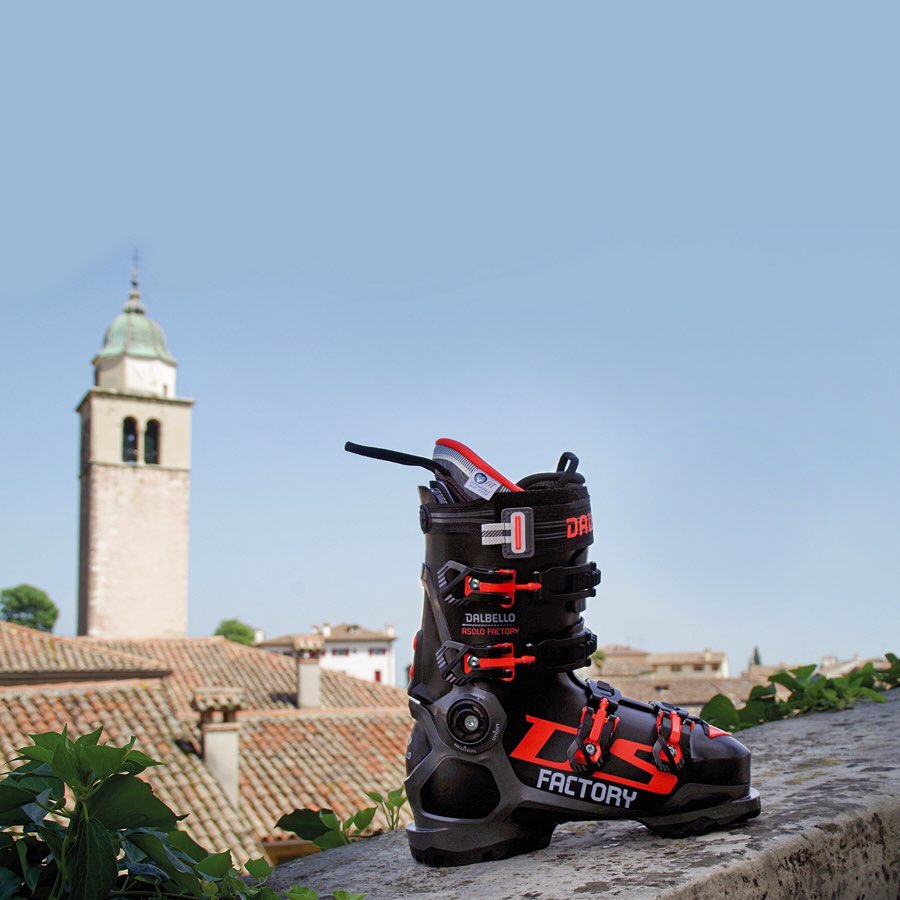
Fill a spray bottle halfway with white vinegar. Pour water into the spray bottle to fill it the remainder of the way. Shake the bottle to mix the ingredients.
Spray the insides of your ski boots to moisten them with the vinegar spray. Allow the vinegar spray to sit for 10 minutes to begin killing bacteria and mildew.
Crumple up newspaper and fill the insides of the boots. Leave the crumpled up newspaper inside the boots to absorb the moisture from the vinegar and help deodorize your boots.
Remove the newspaper from the boots and discard. Sprinkle baking soda inside the ski boots to absorb any remaining musty odor. Leave the baking soda inside the boots overnight.

Baking powder
If you’re not into spending money on gadgets, regular baking powder can also do the trick. Indeed, many skiers and snowboarders swear by a nightly dose of baking powder in their ski boots. Tea bags and chalk also work wonders. If you go this route, don’t forget to air out your boots outside once in a while.
Vacuum your boots, using an upholstery attachment, to remove the baking soda.
So, how do you prevent your ski boots from becoming stinky ?
- Always wear dry socks. Put on a dry pair mid-day if you have really sweaty feet.
- Remove your boot liners from your boots and allow them to dry thoroughly at the end of the day.
- Do not put your ski boots away in a cool dark place if the liners are still wet.
- Wash your boot liners according to manufacturer guidelines and allow them to dry completely before using them again.
- Try not to use your boots multiple days in a row if the liners haven’t dried out.
- Use deodorant or antiperspirant on your feet if your feet sweat heavily.
- Wash your feet with antibacterial soap.
4 easy steps for sizing your perfect skis
Men’s Skis Sizing Chart
Women’s Atomic Skis Sizing Chart
Step 2- Select Your Ability
Step 3 – Select Your Terrain Preference
Step 4 – Type of Ski
About sizing skis- Getting the proper ski length is important. Get too long of ski and it’s hard to handle. Get a ski too short and you have stability, edge hold and response problems. You can not select a ski length first and then select a ski model. Instead, you must first select the ski model and then select the proper ski length.
A few additional things you should know-
- Intermediate skis are made longer than beginner skis. Performance skis are made longer than intermediate skis.
- If your weight puts you between ski lengths, go up in length if you’re taller than average. If you’re shorter than average, go down one length.
- There is no standardization between manufactures when it comes to ski length. Ski manufactures make any length they think is right for their model. You could be in a 151 cm in one model, a 157 cm in another model, and a 163 cm yet in another model.
- DO NOT choose a length first. Choose the model first, then the length.
Sizing Cross Country Skis
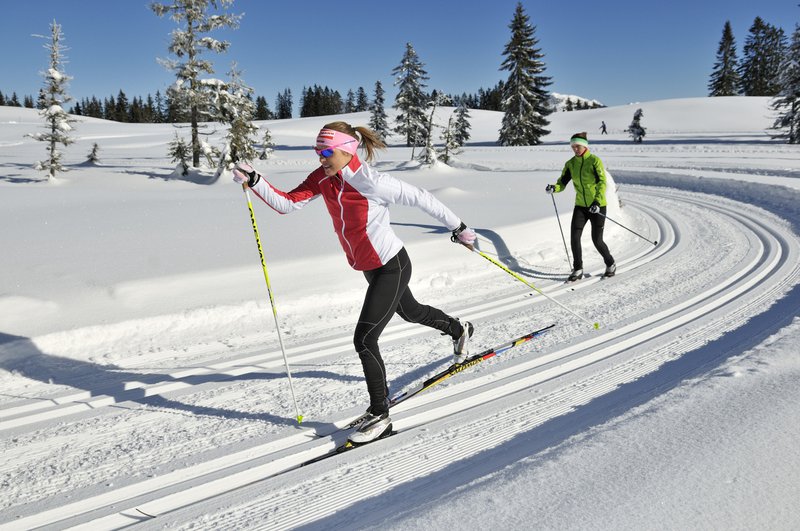
Fischer Nordic Ski Recommended Lengths
Sprint Crown Junior Skis
Flex
Some skis are designed to be easier to bend, both along their length and torsionally (twisting from side to side). Soft flexing models are easier to turn while stiffer ones offer more stability, especially at speed, and for heavier skiers.
Sidecut
This refers to how curvy or straight the sides of skis are. Old school skis were almost straight up and down; all types of modern skis tend to have narrower waists than tips, giving them curvier, hourglass shapes. In general, this makes them easier to turn, especially on piste, however a very deep sidecut means less stability at speed. On-piste skis have the narrowest waists for better grip, while skis with wider waists (and less difference between waist and tips) have extra float, making it easier to tackle variable, off-piste terrain.
In our ski reviews, sidecut is defined by ski width at tip, waist and tail, expressed in millimetres (eg 122/80/110), alongside the length of the skis it refers to in centimetres (eg 170).
Radius
This governs the size of turn skis would naturally make when tipped on edge without pressure. The radius of curvy-sidecut slalom skis might be 12m, and can be as big as 44m for straighter sided, fatter big-mountain skis. Some skis are multi-radius, meaning the natural turn size changes along their length (often big at the front for ease of starting turns, tight at the rear for ease of finishing them).
That’s why skis in our reviews may have two or more radius figures.
Rocker
Traditionally, skis are raised off the ground in the middle (see ‘Traditional camber’ below). In its simplest terms, rocker means that if laid flat the centre of a ski touches the slope while the tip and tail curve up more than usual. This makes turning in powder easier, so most all-mountain, freeride and big mountain skis have some form of rocker. The downside of rocker is that it can detract from grip and stability on piste, so to make on-/off-piste performance more balanced, skis may have partial rocker – just at tip and tail for example, with a more traditional construction in the middle for improved grip. Even park & pipe skis may have some rocker, to help with pivoting and buttering.
• Freeride ski test winners
Traditional camber
The opposite of rocker. Tips and tails make contact with the ground when skis are laid on a flat surface, and there’s a gap under their centre. This shape can make it easier to transfer weight to the tips and tails, helping with grip. A bigger gap under the centre also makes skis livelier. Most on-piste skis have traditional camber (sometimes with ‘Tip rocker’ – see below). Park & pipe skis tend to have traditional camber to maximise pop.
Tip rocker
Some on-piste skis have a little rocker, usually at the tips only. Although rocker is generally used to help with float off piste, tip rocker can also help with starting turns on groomed snow.
Reverse sidecut
Some powder skis with rocker get wider instead of narrower from the tips back towards the middle of the shovel, before narrowing again towards the waist, to help with float. The same may apply at the tail. Termed reverse sidecut, it’s intended to increase float in powder.
This can mean there are four or five width measurements for sidecut in our ski reviews, instead of three.
Mounting point
Skis have a recommended mounting point for bindings – most are mounted slightly back of centre. Generally, the further forward bindings are, the easier skis are to pivot (on snow and in the air) and the more playful they feel. The disadvantage is that the tips tend to submarine in deep snow, and the skis tend to be less stable in long, fast turns. When buying bindings separately from skis, sometimes there’s a choice of mounting points, so you can specify the one that suits your skiing style. Even with integrated bindings, there’s sometimes an option to move the binding toepiece forwards or backwards to adjust stance on the ski.
Best Men’s All-Mountain Skis of the Year
What does “all-mountain ski” mean?
- From groomed runs to moguls to the steep-and-deep freeride terrain, all-mountain skis are designed to take on the entire mountain. They usually feature a waist between 85-100 millimeters and are sold without bindings. The majority of all-mountain skis that our testers prefer feature wood cores and two sheets of metal—but there are exceptions about the metal, including the Head Kore and Scott Slight families. Although versatile, many all-mountain skis are a bit too narrow for very deep powder skiing.
How long do skis last?
- With proper care and regularly performed tuning by a professional ski tech, skis can last for 200-300 days on snow depending on the size and aggressiveness of the skier. Larger skiers and people who are harder on their equipment will not get as many days on snow before the wood core, edges, or other aspects of the ski become compromised. Bindings should be tested by a professional ski tech every season, and replaced when they do not meet standardized norms.
For skiers who want to rule the mountain, these skis are where to start. They can take on groomed, chop, bumps, power, the list goes on. You call it, they ski it. And like well-trained dogs, take the leash off and let these ski do the work all over the mountain.
The Best Men’s All-Mountain Skis of 2020
BEST IN TEST: Head Kore 93

The 2020 Head Kore 93 had the highest score of any ski at SKI Test in Taos, N.M. Photo courtesy of Head
The narrowest member of Head’s Kore family has proved to be the complete all-mountain package yet again. The ski’s construction is a perfectly blended combination of a karuba wood core with Koroyd plus carbon and graphene built into the tip and tail. Altogether, this provides best in class versatility, best overall impression, and the top score of the entire SKI Test. According to Sexauer: “The best ski from the test. Can make you a better skier without forcing you to be a better skier.”
Völkl Mantra M5
Last season’s biggest release remained unchanged but moved up significantly in the rankings. Why? Well, it fits this revised one-ski-for-every mountain category perfectly. Featuring a modified upper layer of Titanal—which Völkl dubs the Titanal Frame—and a carbon insert in the tip, the Mantra M5 wowed testers with its stability at speed and its ability to mow down crud and bumps all day long while still remaining quick edge-to-edge. Rogan: “A blast of a ski that could be anything, anywhere.”

The Volkl Mantra M5 slays the fresh powder in this photo. The M5 is fun in all conditions, and despite being thought of as a burly, hard-charging ski, it is quite nimble and floaty in pow.
Fischer Ranger 99 TI
Fischer’s answer to the one-ski quiver question was favored by strong testers with a need for speed. Featuring two sheets of metal and a traditional sandwich construction, the shape of the ski—in particular extended edge contact thanks to reduced rocker—allowed the ski to excel on hard snow. An optimized swing weight kept the Ranger 99 TI happy in crud and variable conditions too. Larsen: “Feels strong underfoot and damp like a Cadillac. Suits a bigger skier well but isn’t too overbearing.”
Fischer’s answer to the one-ski quiver question was favored by strong testers with a need for speed. Featuring two sheets of metal and a traditional sandwich construction, the shape of the ski—in particular extended edge contact thanks to reduced rocker—allowed the ski to excel on hard snow. An optimized swing weight kept the Ranger 99 TI happy in crud and variable conditions too.
STRENGTHS: Crud, Stability at Speed
Atomic Vantage 97Ti
Last season, Atomic stiffened up the Vantage Ti line and added translucent windows that show off the core’s Titanal laminate grid. On snow, testers praised the 97Ti’s hard-snow carving skills and managed it in bumps and tight spots with little effort. But the ski’s best quality was its ability to remain welcoming at slower speeds, making it a great option to improve technique for nearly every ability level. Syrovatka: “Allows you to be nimble and learn how to carve, yet great in bumps and at speed.”
The Best Men’s All-Mountain Narrow Skis of 2020
BEST IN TEST and BEST VALUE: Head Kore 93
Once again, the Kore 93 dominated this category. Showing off for testers, this ski could perform a variety of turn shapes at a variety of speeds in ways that can make intermediate skiers advance and expert skiers smile. Made with graphene, a Nobel-prize winning compound that is super light and strong, fused with a karuba wood core layered with KOROYD, this ski wowed testers in all conditions. Larson: “So solid and stable, nothing comes close.”
Völkl Kendo
Testers struggled to find anything wrong with the Kendo. They loved how it can lay down trenched arcs on groomed snow, play around in bumps, and even handle choppy re-frozen crud with predictable, reliable, German-built precision that skiers have come to expect from Völkl. Featuring a metal overlay, full wood core, and just a touch of rocker in the shovel, this ski goes everywhere and enjoys every turn. Rogan: “Just buy this ski, you’ll make the cost back in great skiing.”
Things you Need To Check Before Racing To The Hills This Year
SKIS & SNOWBOARDS
The 2020/2021 season is here!
Visit our rental center for all your equipment needs and let our caring Experience Guides introduce you to skiing and snowboarding.
Our rental equipment is a great ski for beginners and up. Soft, lightweight and easy to control, the BYS System features a new streamlined process that is guaranteed to get you on the hill faster.
*Please note: Person’s under the age of 18 will need to be accompanied by or have the rental agreement signed by a parent or guardian in advance of arrival.

*Ski Packages
Packages include skis, boots, bindings, & poles.
*Snowboard Packages
Packages include snowboard, boots, & bindings.
Security Deposit
When you pay for your rentals, you will be asked to provide GOSKAND Inc. with a valid credit card. We will keep your credit card number on file until all rental equipment is returned.
If you do not have a credit card a $300 cash deposit is required for each ski and snowboard rental.
SKIS & SNOWBOARDS
All rentals are on a first come, first serve basis and cannot be reserved in advance. Reserve your Rentals & Rental Equipment
Ski Rental Rates
We carry adult boots from sizes 5 to 17 1/2. The smallest child boot size we carry is 8 1/2.
Helmets may reduce the risk or severity of some types of injuries, however they cannot keep you safe from injury.
Skiing can be a hazardous activity regardless of any and all feasible safety measures that can be taken.
Stop by and “check out” the Very Best Ski and Snowboard Rental Equipment on the Market in South side of Chicago
Weekend Rentals ( 3 Days)
Pick up rentals on Thursday after 5 pm & return them by noon – 2 PM on Monday. Rentals returned after will be charged a $35.00 late fee.
Security deposit for non-returned rentals will be charged each day
Prices subject to change without notice.
Going on a trip this season? We’ve got you covered! From baselayer to outerwear, Goskand Ski and Snowboard Shops have what you need to stay warm this winter. The key to staying warm is layering – this helps you be prepared for the varying conditions you will Face. We also suggest you use our pre-trip checklist so you don’t forget the little stuff like sun screen and neck-ups.
Skis Sizing Chart
*Please note: this is only a recommendation. Please contact our customer service department so we can give you a more accurate recommendation based on your individual needs.
Men’s Skis Sizing Chart
To sizes go to Equipment Rental
Women’s Atomic Skis Sizing Chart
Men’s Spyder Sizing Chart – Apparel and Gloves
Please Note: Spyder ski wear tends to run a bit narrower and shorter compared to other vendors. We recommend “sizing up” if you are not familiar with the “Spyder fit.”
Men’s Body Measurements
Women’s Body Measurements
To sizes go to Equipment Rental
Spyder Gloves Sizing Chart
All measurements are in INCHES
Ski Boots Sizing Chart
Please note, we recommend that if you do not know your ski boot size you should be fitted by your local ski shop before making a purchase.
Use the conversion chart below to determine what boot size you may be. Please note, this is a ‘guide’ and not a specific sizing chart. If you have any questions about fit and boot size, please feel free to contact our store. 773-586-2577
BEFORE YOU RACE TO THE HILLS
Winter is finally coming. You have waited patiently for the snow to start falling and if you are like us, you have begun counting down the days to get back on your skis or snowboard. Before you race to the hills, ask yourself is your gear really ready for the upcoming season? No question the slopes take a toll on your gear, and without the proper maintenance and safety checks you could really be putting yourself at risk. So, let’s do a quick safety check to make sure your gear is ready for what we hope will be an epic ski season.
Skis and Bindings
Inspect your skis one at time. Check the base and look for excessive scratches, scuff marks and other damage. If your skis don’t look shiny and don’t feel smooth to the touch, it is time for a new coat of wax.
The edges of your skis can take a beating during the season so it is very important that they stay in great condition. Inspect the edges for bumps, chips or other damage. If the edges do not feel smooth, consider bringing them in to us for a tune up.
You’ll also want to make sure that the tips of your skis are still laminated, and if they are not– this is an issue you will want to have repaired right away.
When it comes to your bindings we recommend they be professionally tested at the start of each season regardless of how they look or feel. To maintain a safe level of operation it is important to have each binding tested on the equipment of a professional workshop. Use, age and other factors can change the internal workings of your bindings, potentially compromising their safety and release points. Our equipment simulates stresses and environmental factors that are impossible for a visual inspection to reveal. Our certified testers will dial in your bindings to precise settings in order to maintain their optimal level of performance for all factors including your age, weight and ability level.
Snowboards and bindings
Do a visual inspection of your board. Start off by examining the bottom of the board and look for any major dents or scratches. If you do notice anything out of the ordinary, you will want to have the bottom of your board resurfaced by a professional. These dents and scratches will impact your speed and performance, so this is something you will want to have repaired before hitting the slopes.
Did you wax and tune your board before storing it for the season? Tuning your board will help you perform better and can drastically improve how you ride. If you are unfamiliar with how to wax your board– we would be more than glad to handle that for you.
Time to check those snowboard bindings. Make sure they still provide that nice and tight feel. Check them for any cracks or breaks. If your straps or ratchets are starting to wear down– consider replacing them. Also, be sure to tighten all screws that are being used to hold the bindings in place.
Boots
Step into your boots to see if you still get that tight and snug feel. Are you noticing that the inner liner has begun to deteriorate and your boots just don’t feel as tight as they once did? No question about it, to perform well on the hill – you need a pair of boots that fit perfectly. A bad fitting boot will lead to a decrease in performance. So instead of getting on the mountain with a pair of old boots that don’t provide the support you need –consider replacing those with a pair of brand new boots.
Helmets
Safety should always come first on the slopes and this is why we at GOSKAND always recommend wearing a helmet. How old is your current helmet? Since the foam and plastics inside the ski helmets can become less effective with age it is critical that you replace your helmet every 3-5 years. Inspect your helmet for any damage — especially if you took a big spill last season.
Goggles
Did you have trouble last season with your goggles fogging on the hill? Are your lenses scratched and affecting your visibility? If, so it may be time to replace your googles . Your goggles should provide you with a snug fit and provide you with adequate ventilation to help keep you on the hill all day long.
Keeping your ski and snowboard gear in tip top shape is essential. So, go ahead and dig out your gear and start getting it ready for the upcoming ski season. At Goskand Ski and Snowboard Shop retail locations, we offer access to a variety of work shope service. Whether you need a sharpen and wax, a binding mount, a complete tune-up, or a binding adjustment, we have the staff and equipment to take care of you! So don’t stress about getting your gear ready, we have your back!
See you on the slopes!
Complete Tune-ups Include: Bottom Stone Finish, Bottom Wet Grind, Edge Sharpening, Deburring Edges, Computerized Binding Test, Structuring, Hot Wax** You must bring in your ski boots for any binding work that will be done to you skis. This includes binding mounts, re-mounts and adjustments. This is necessary to make sure your bindings are adjusted for your specific ski boots

